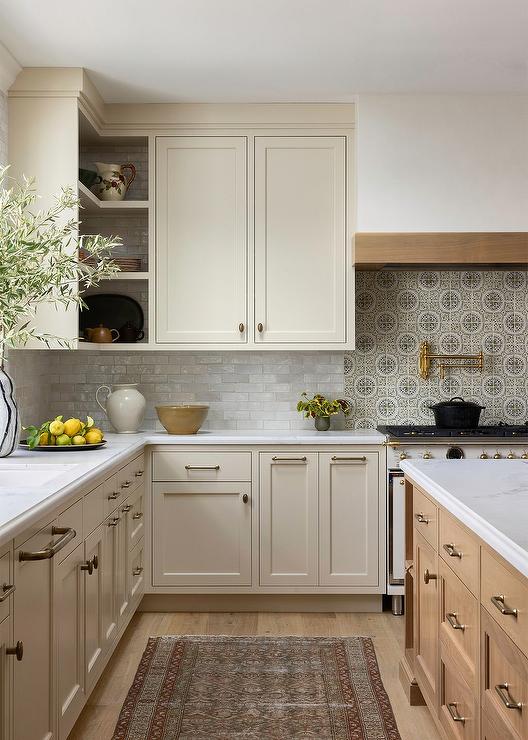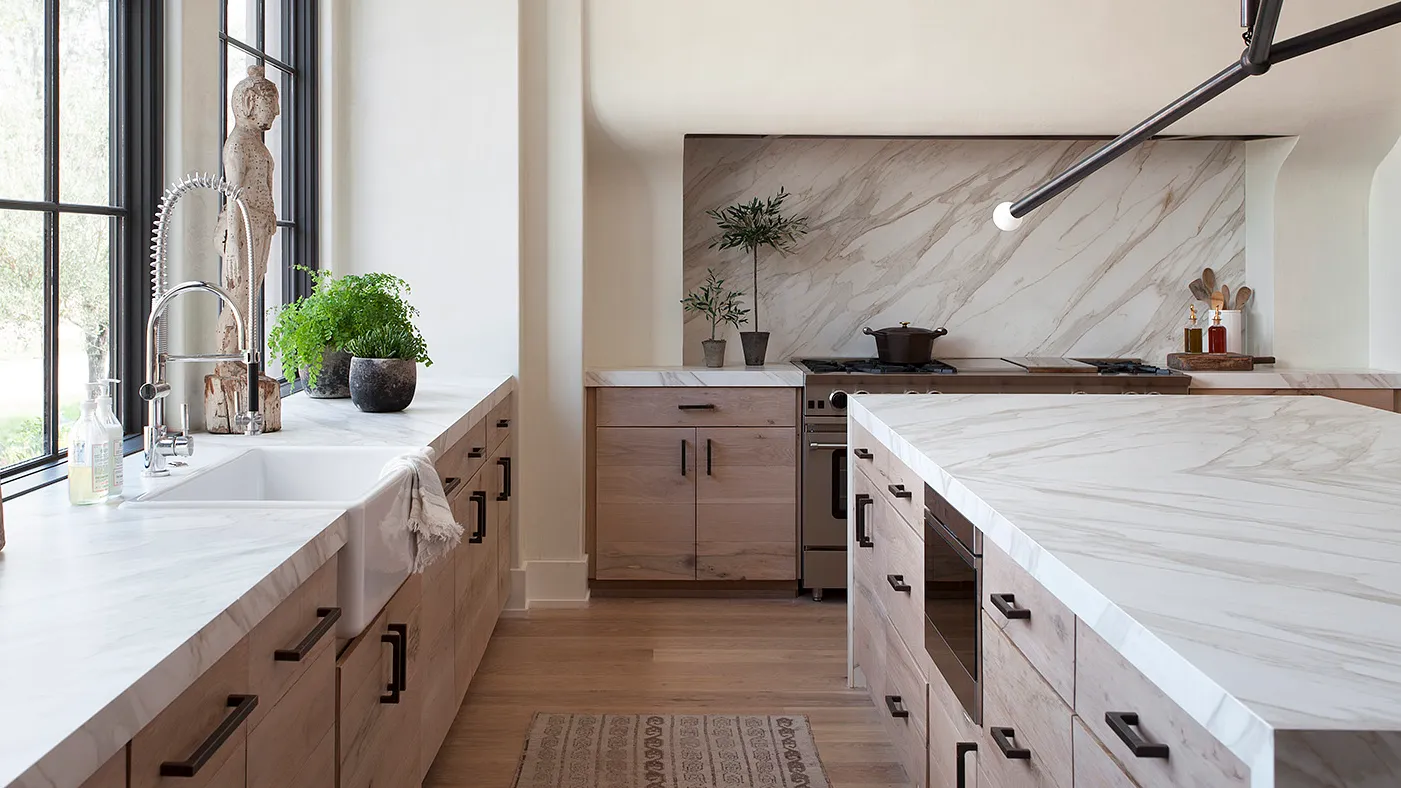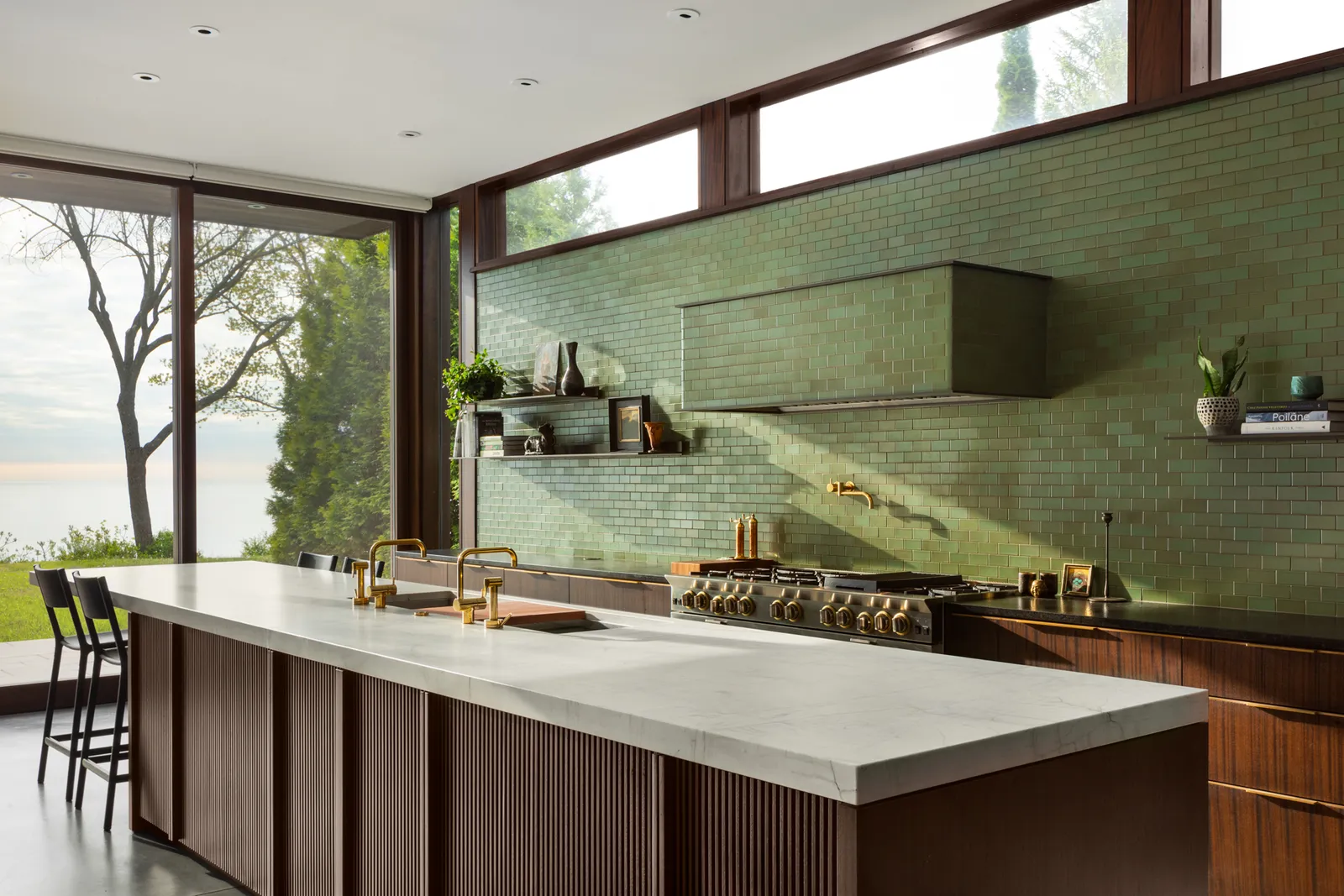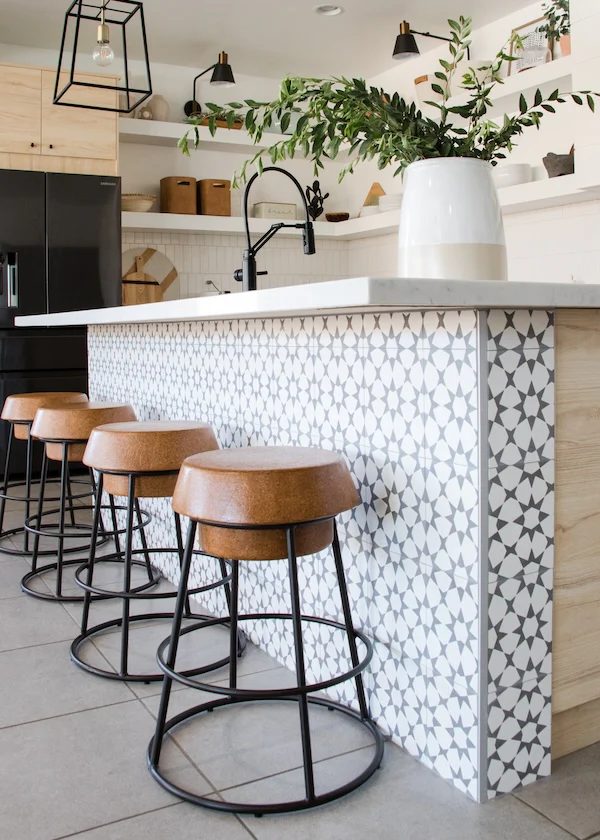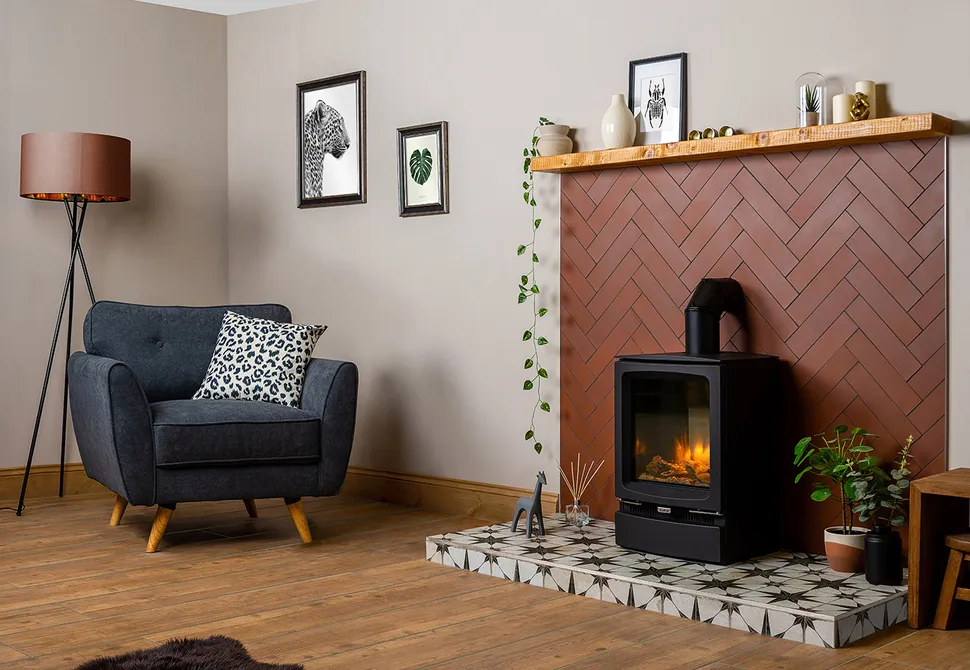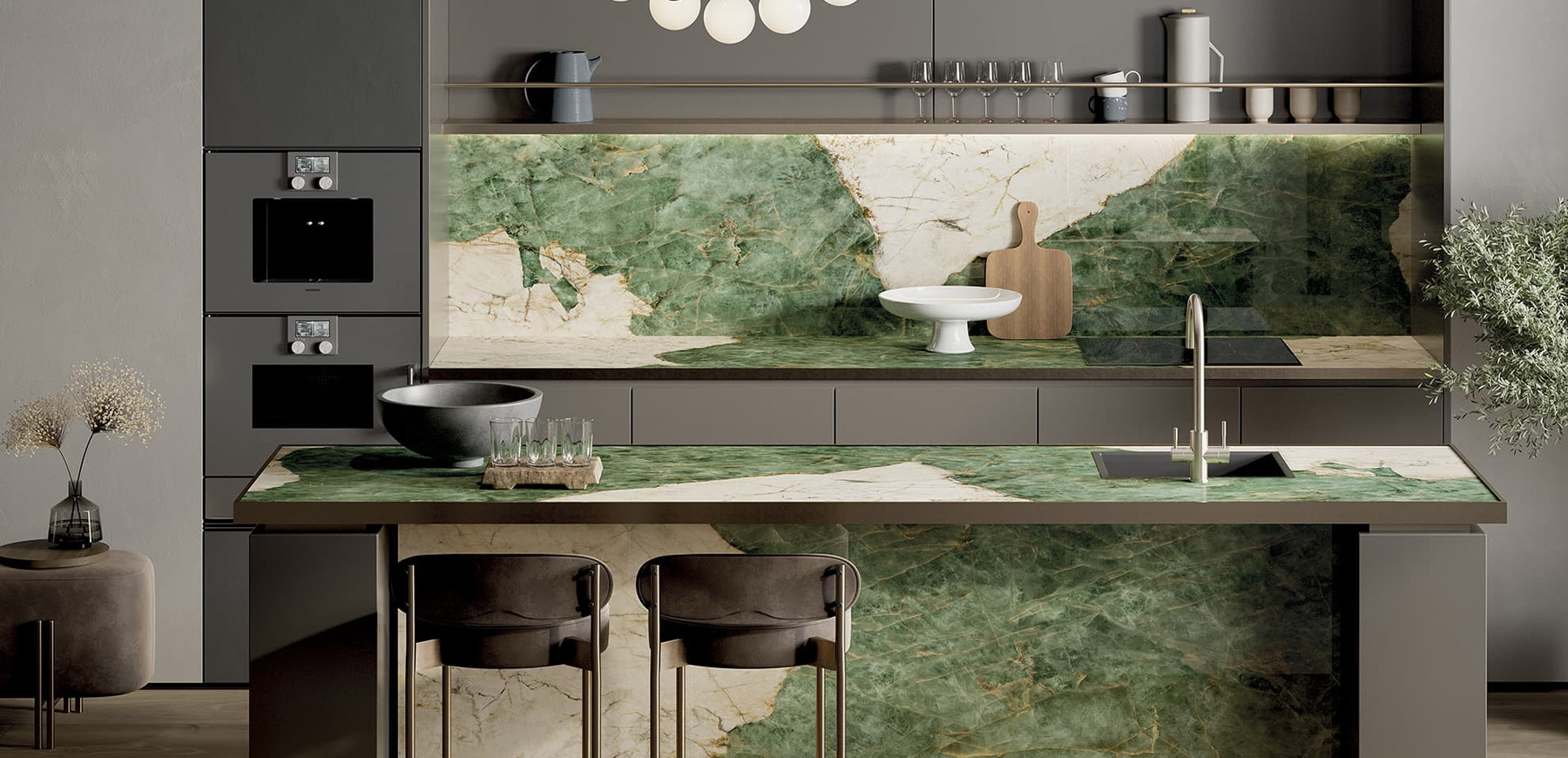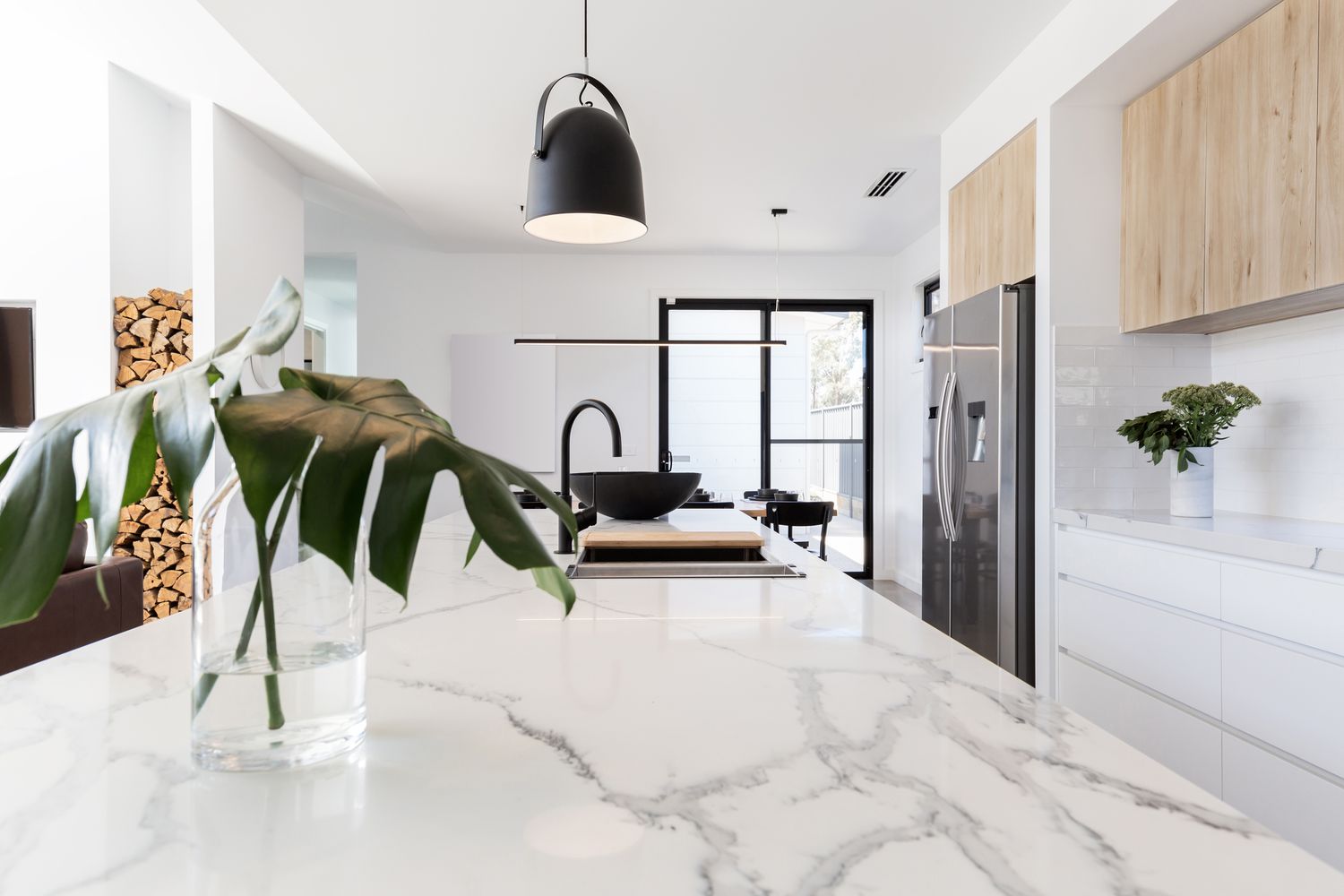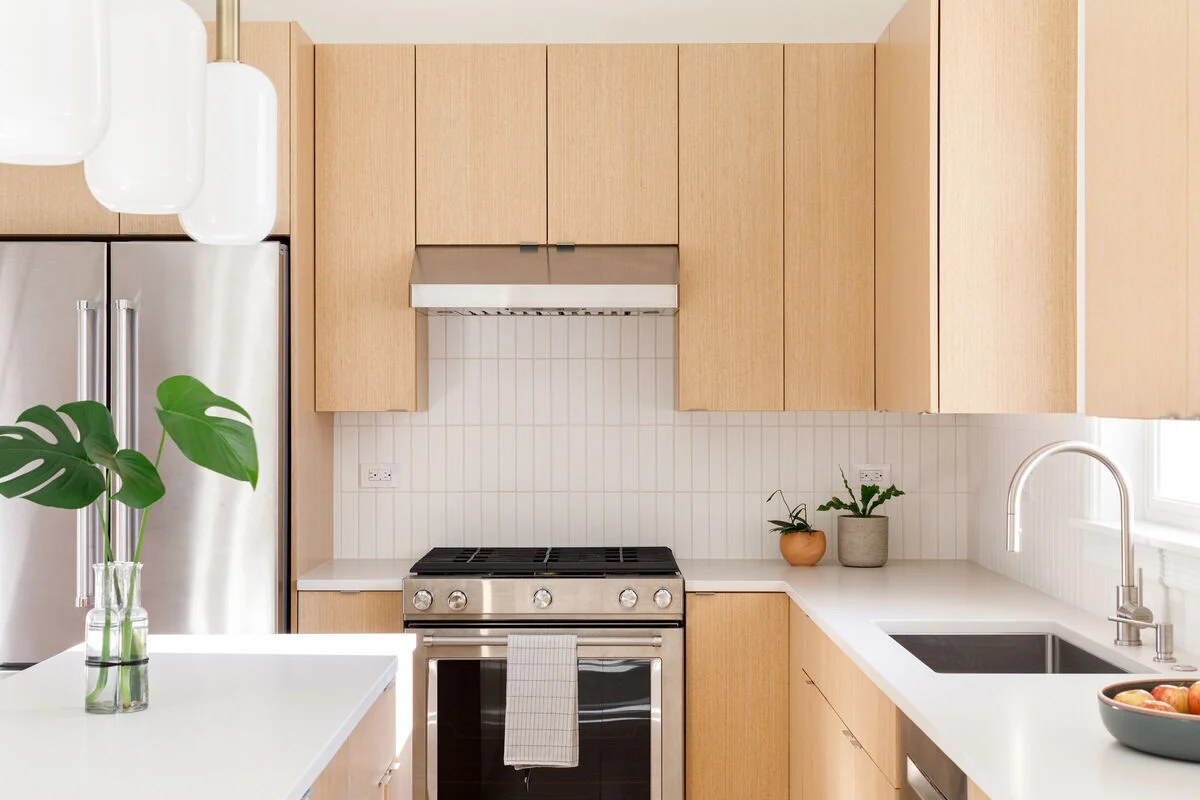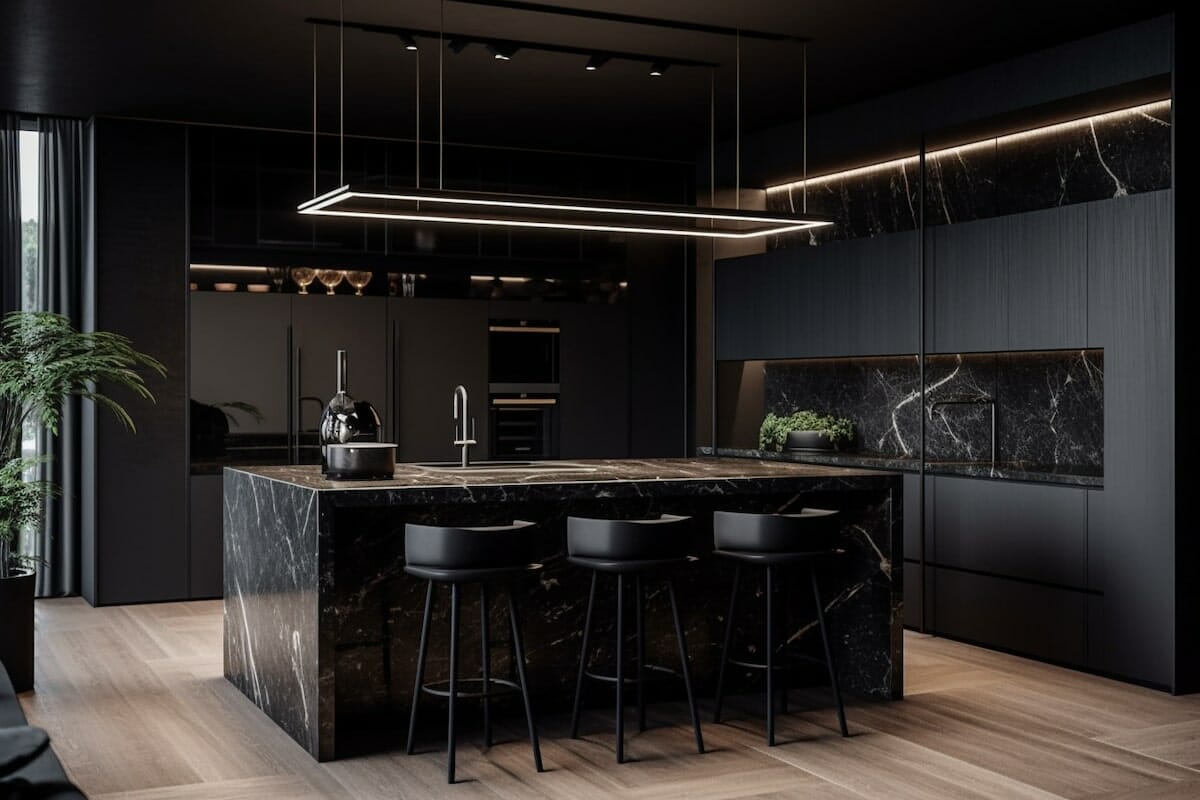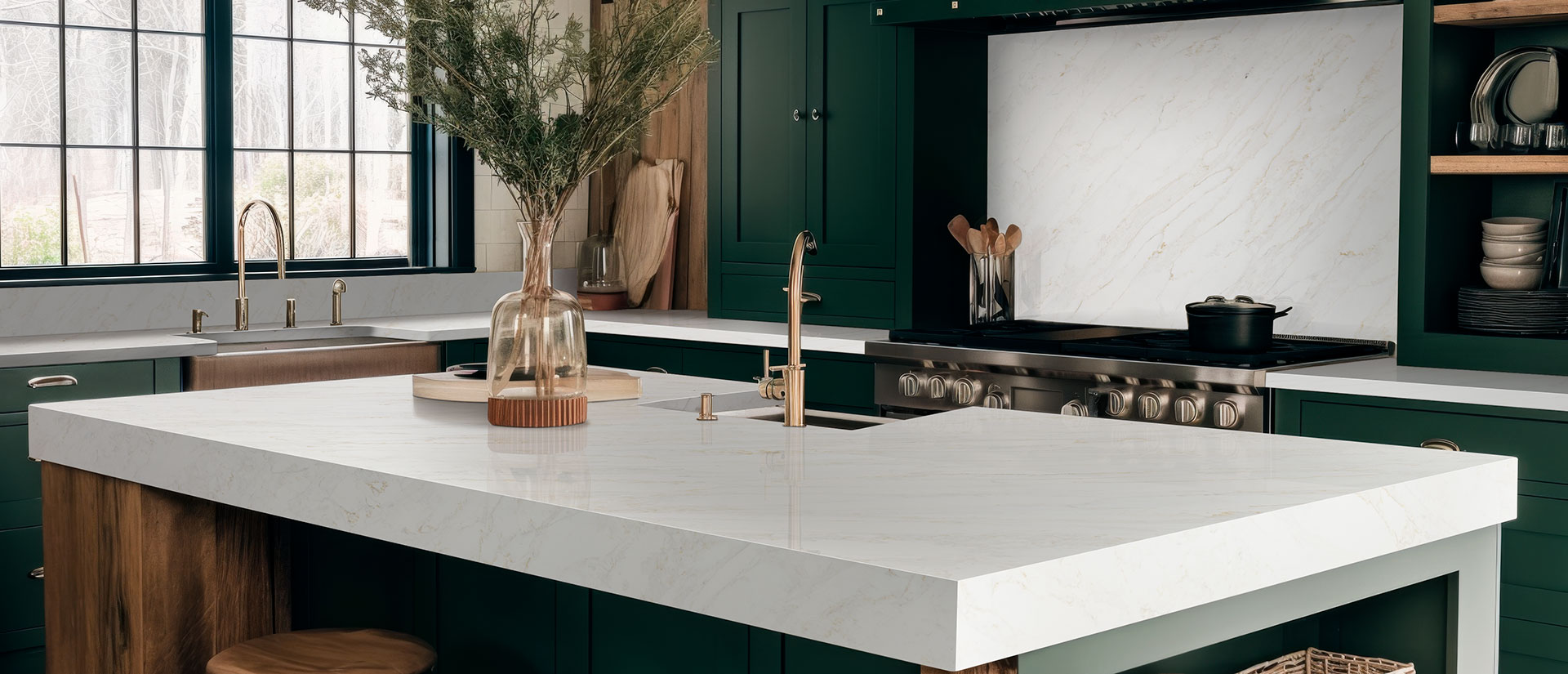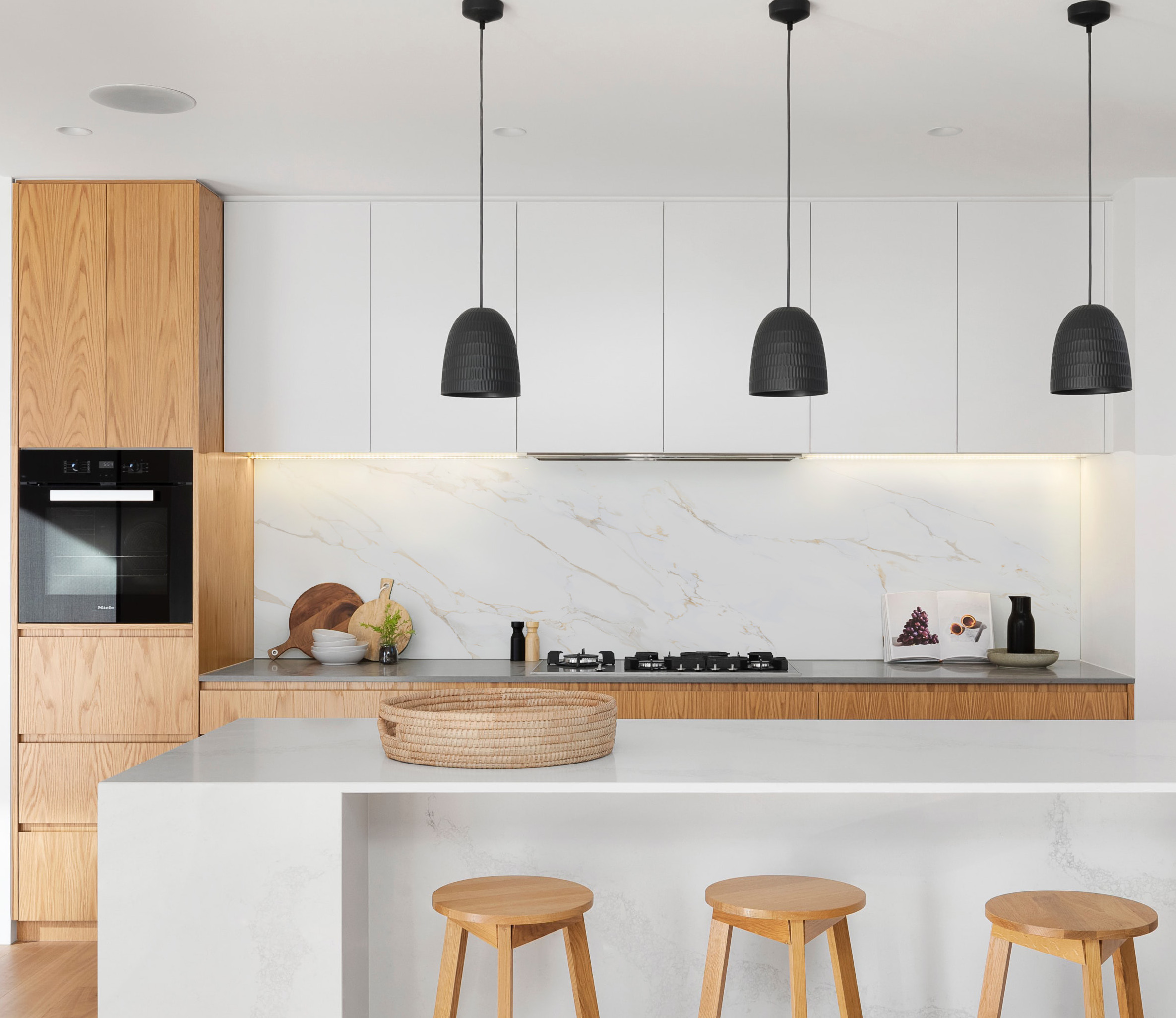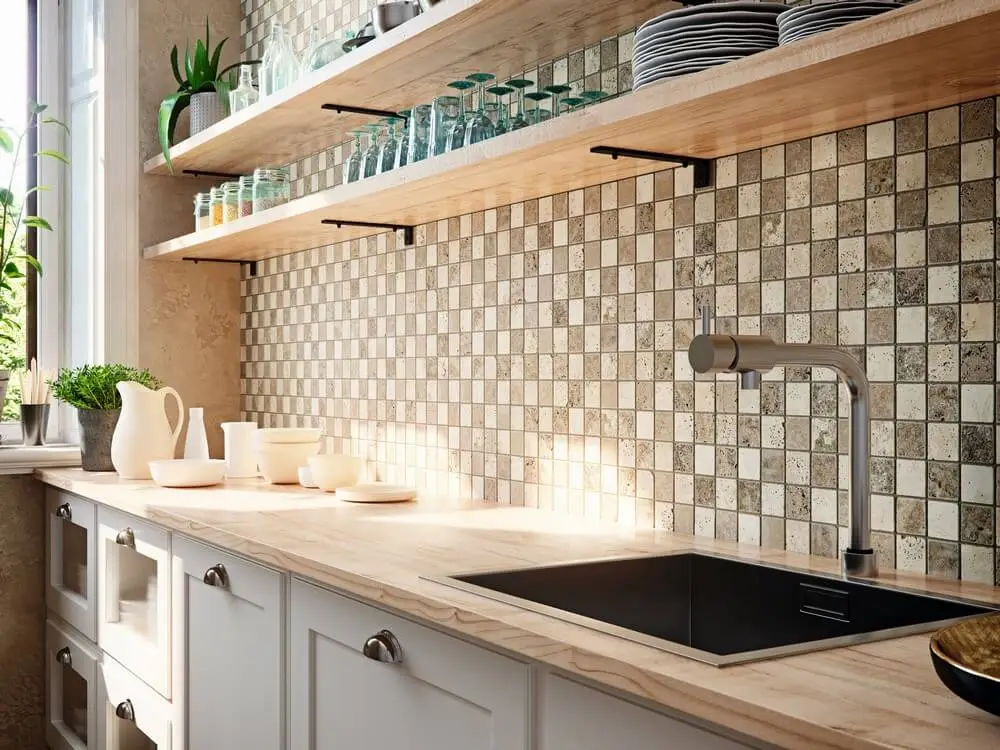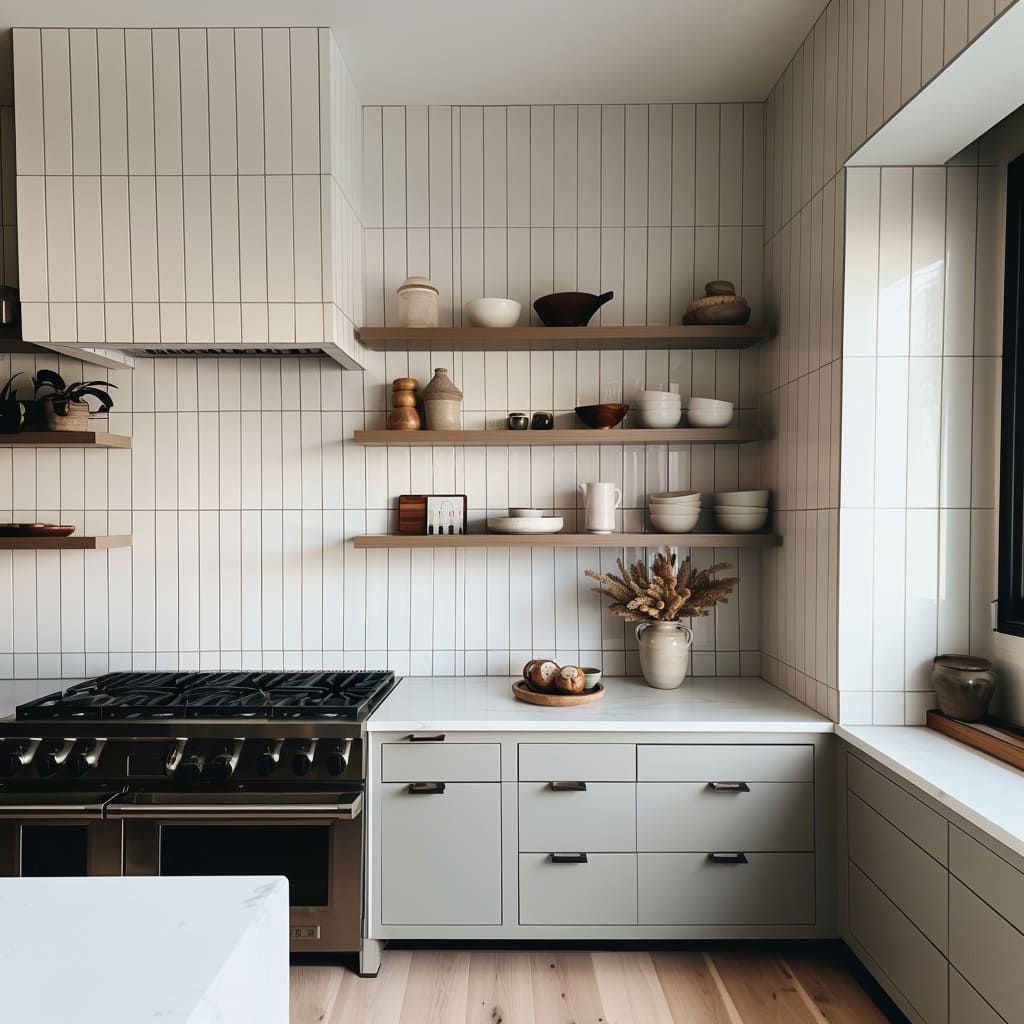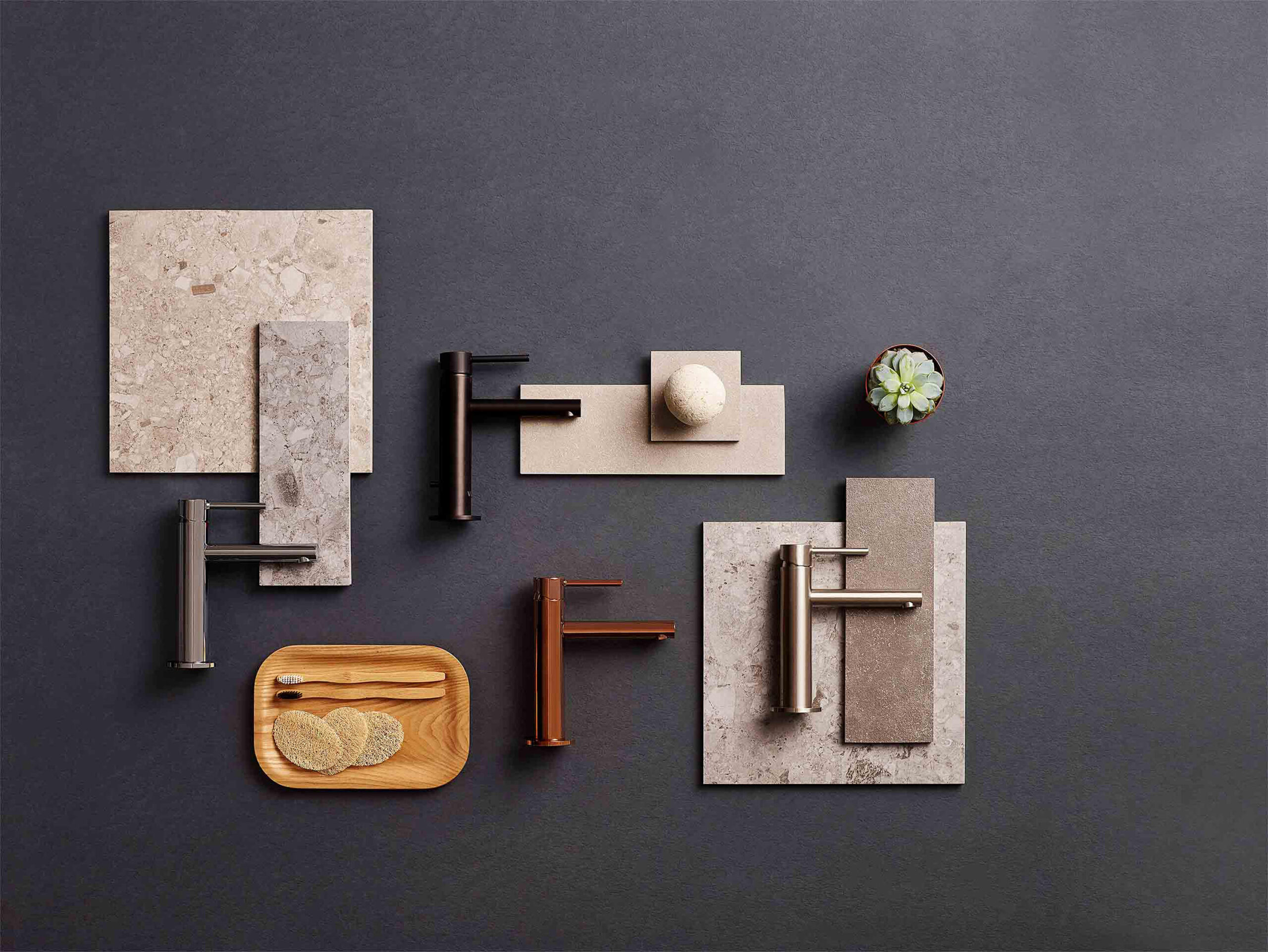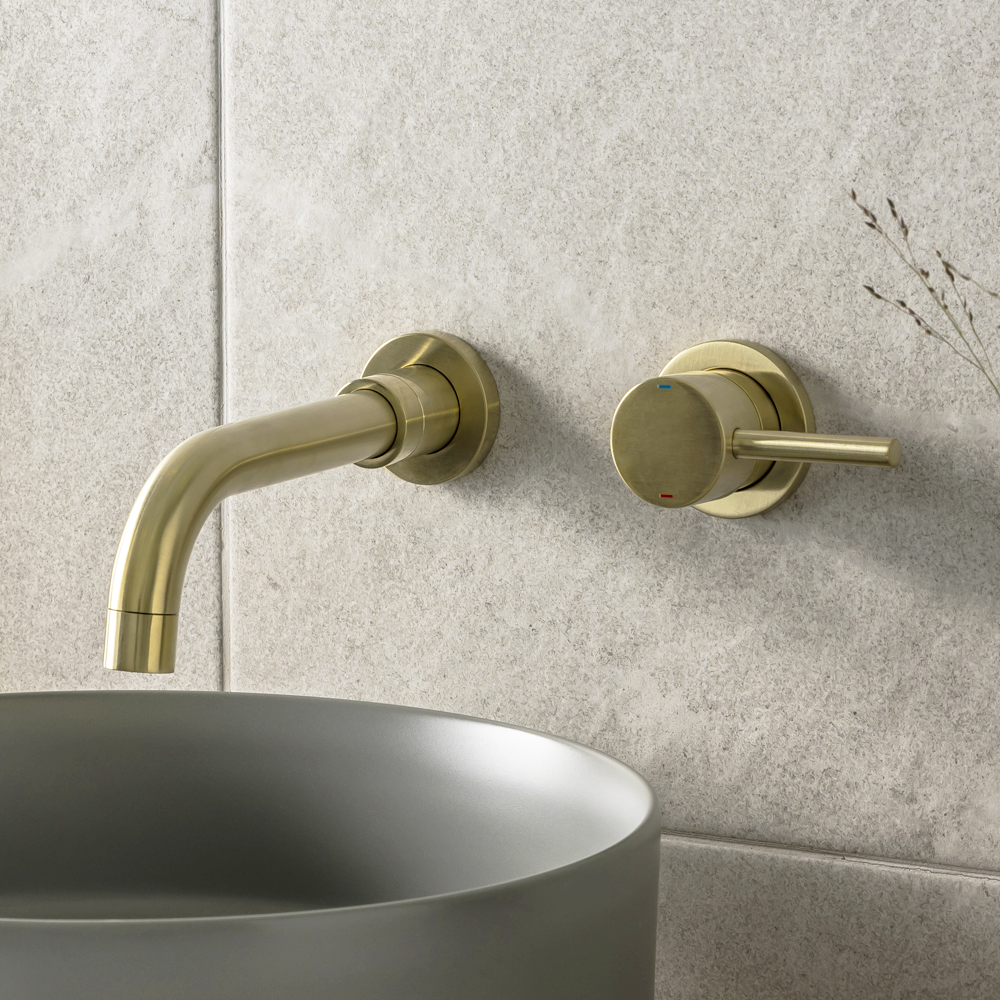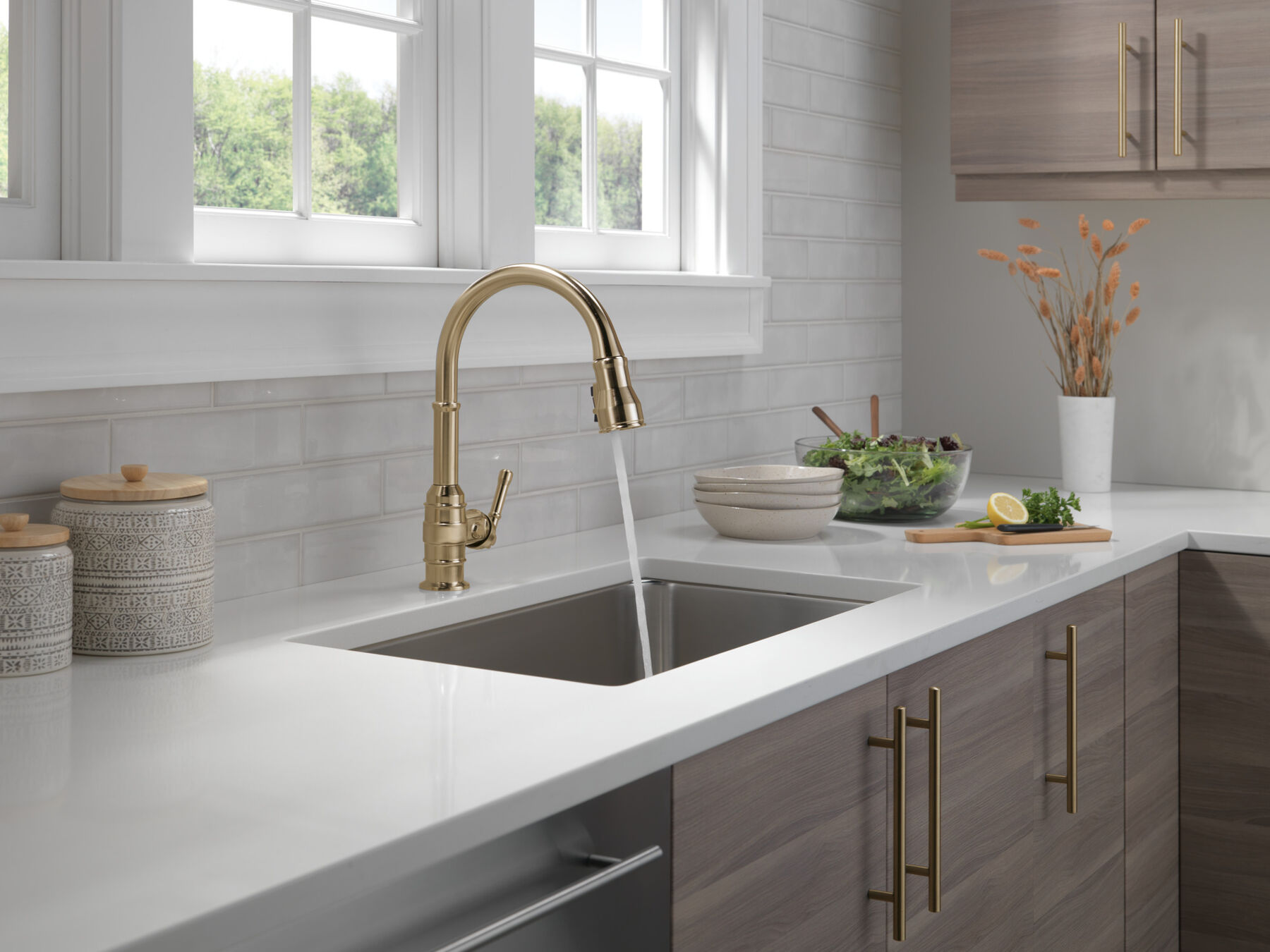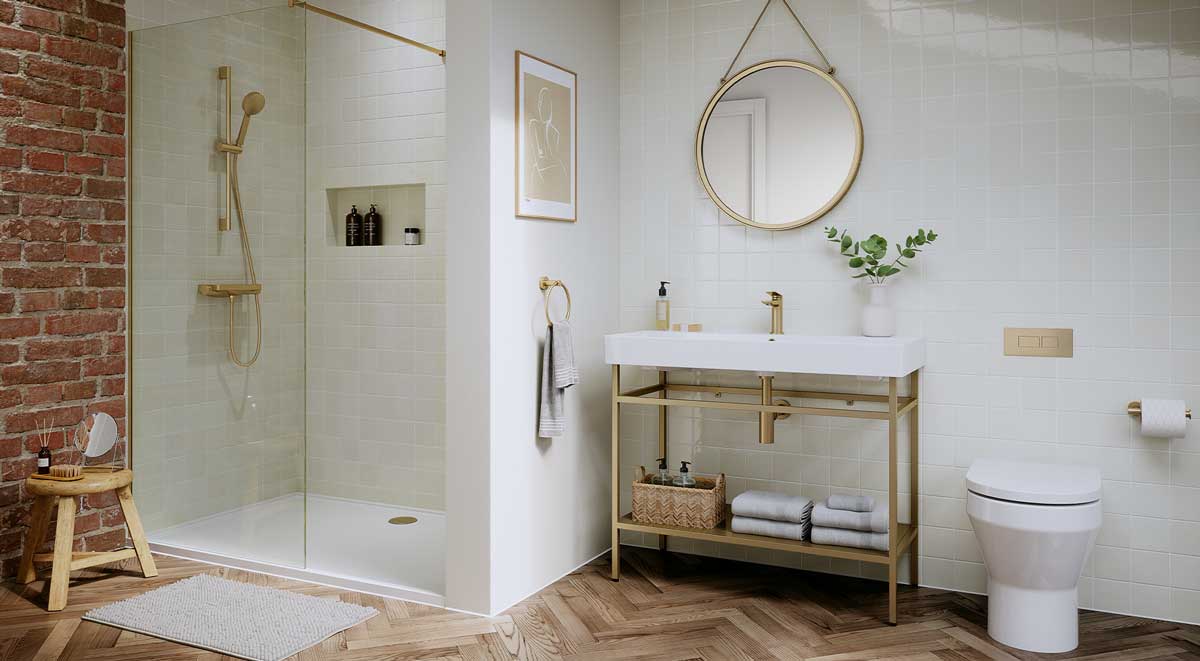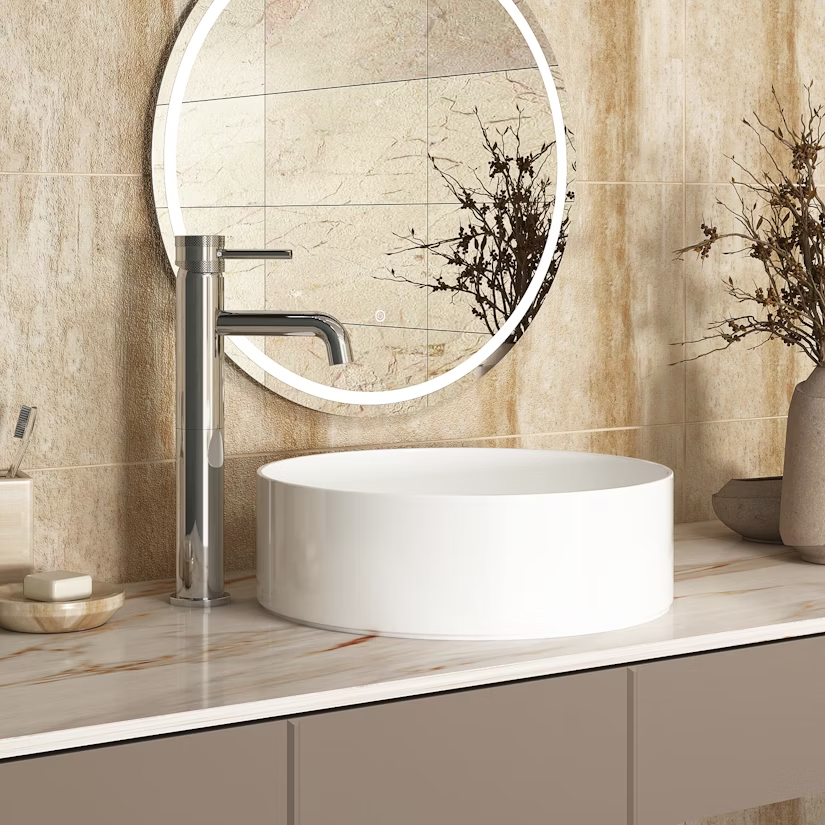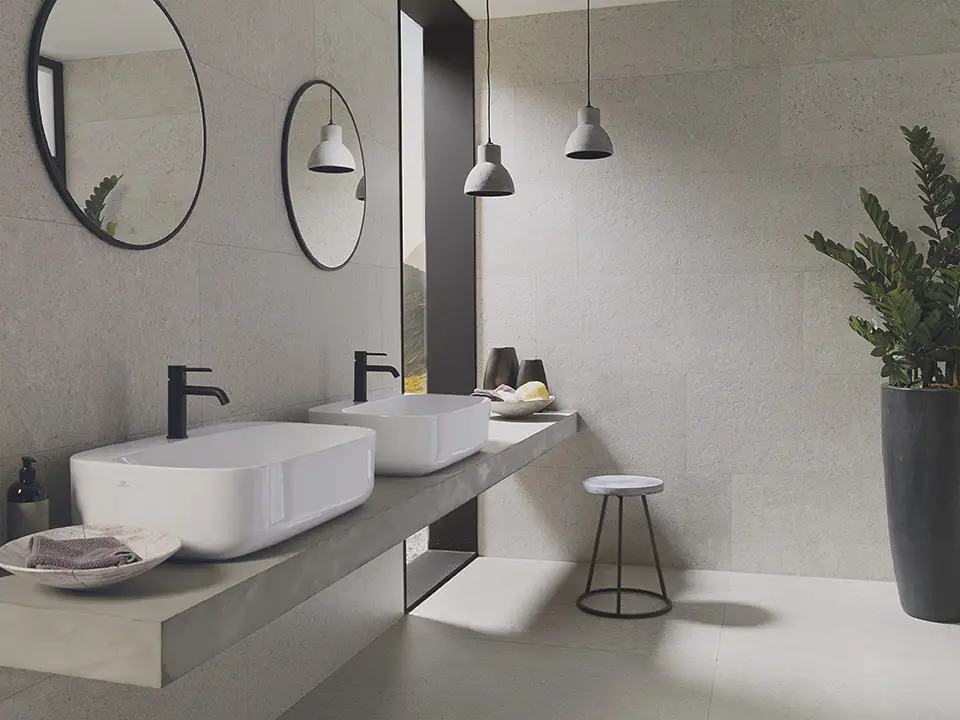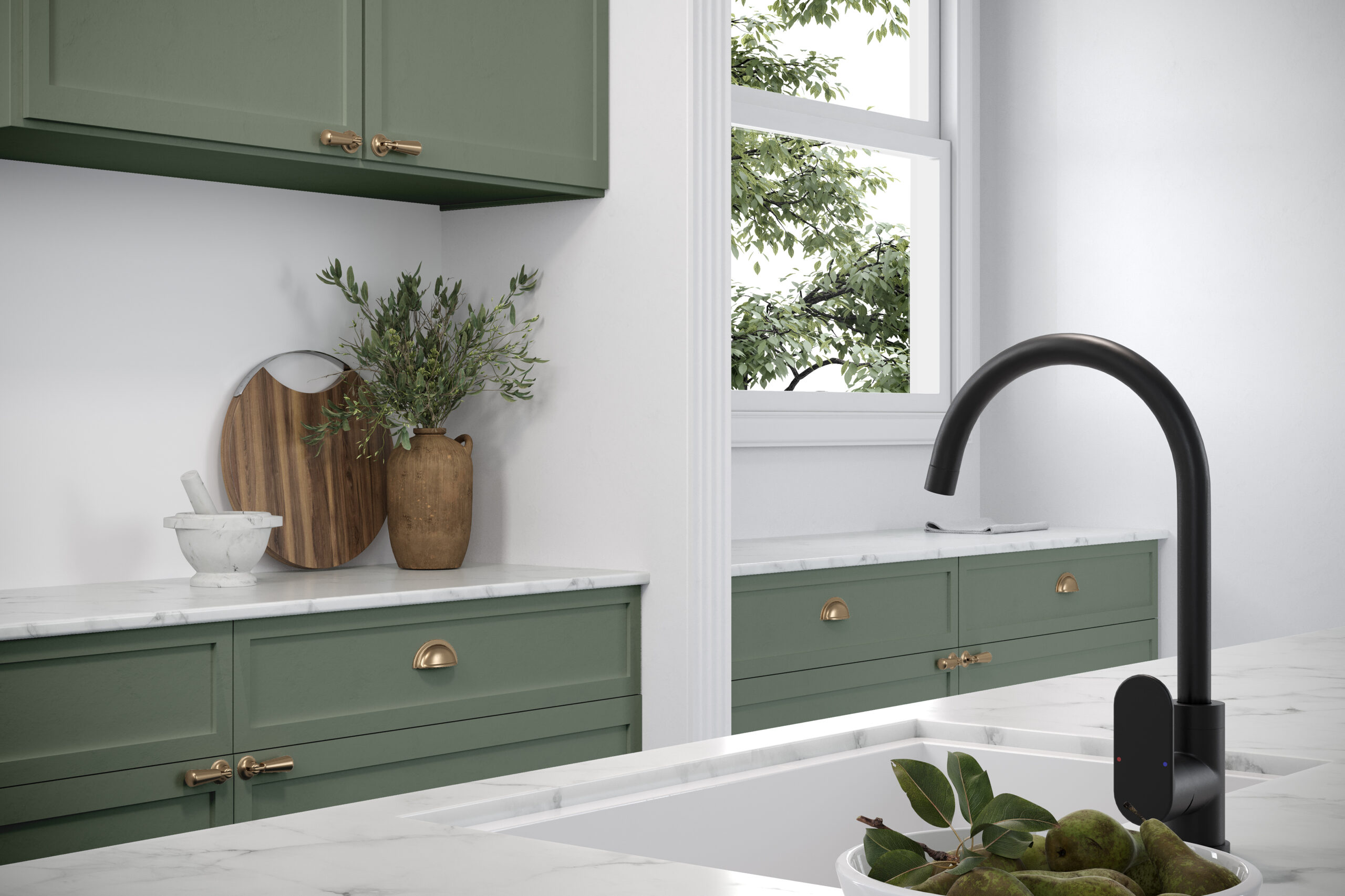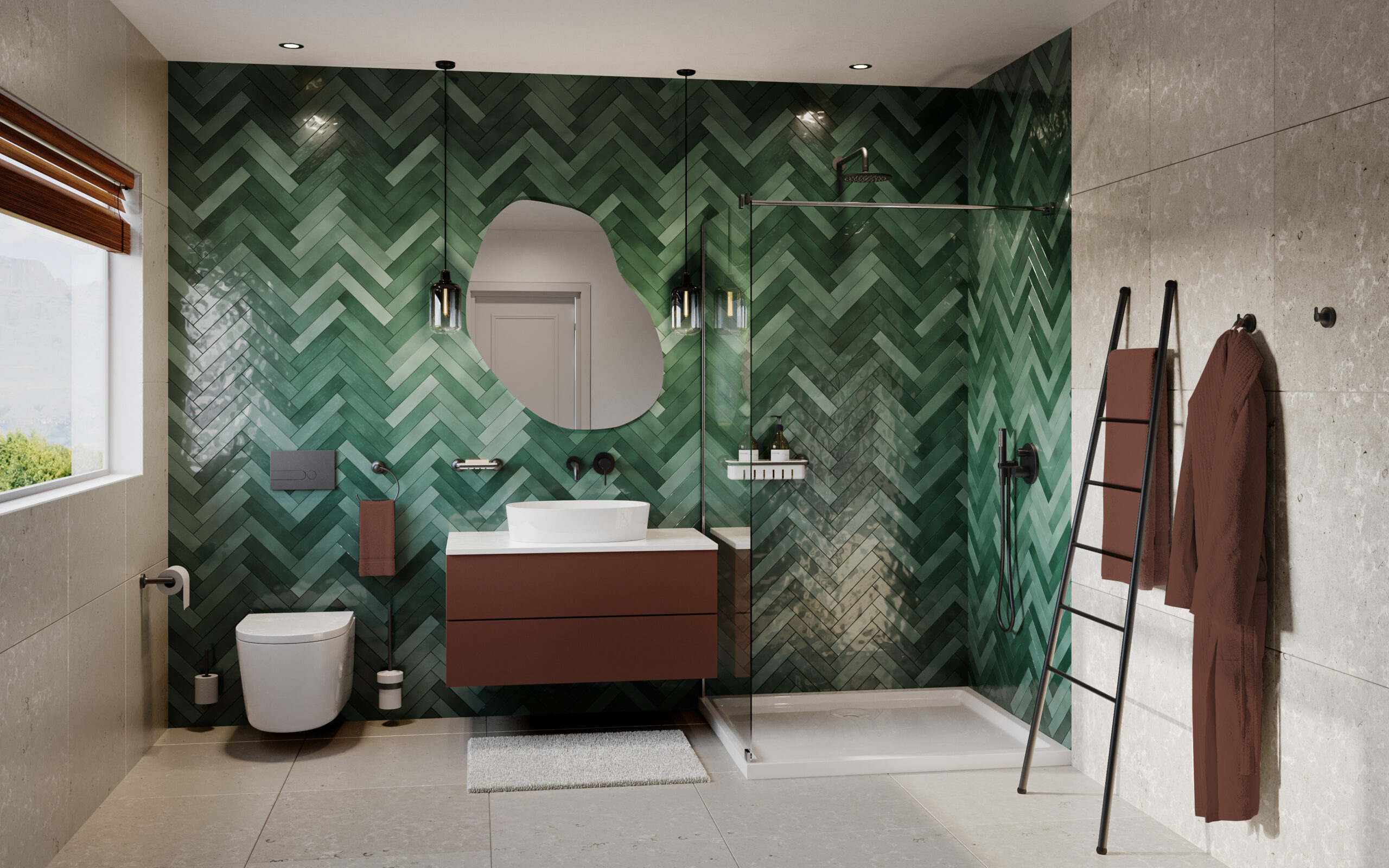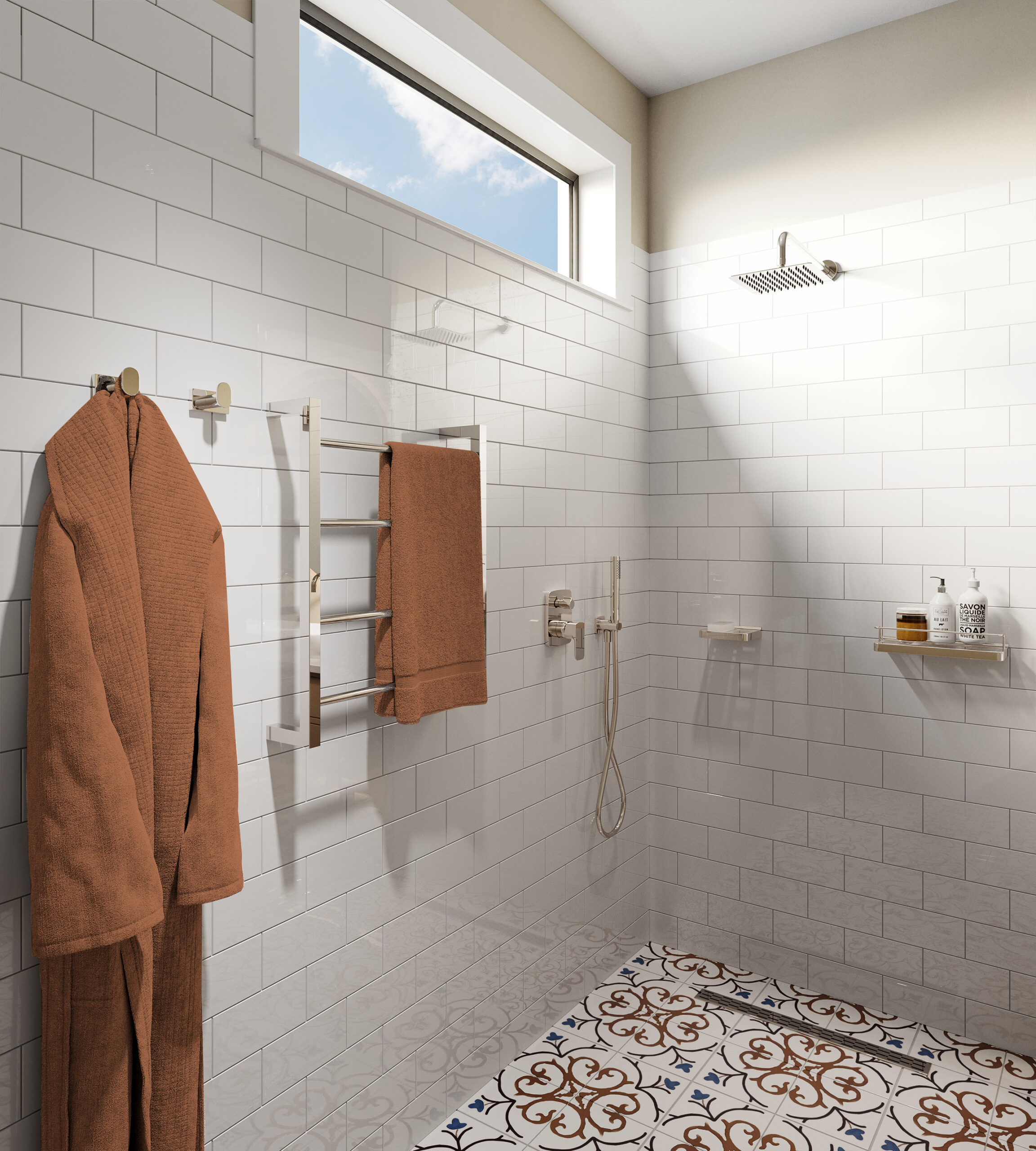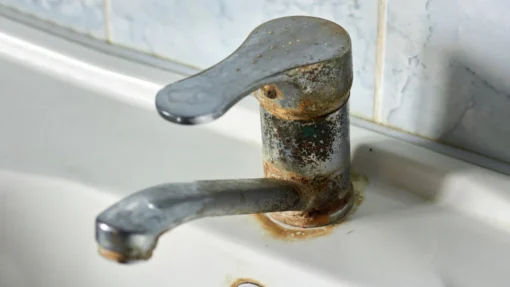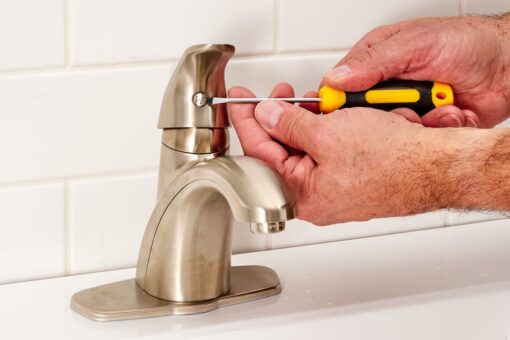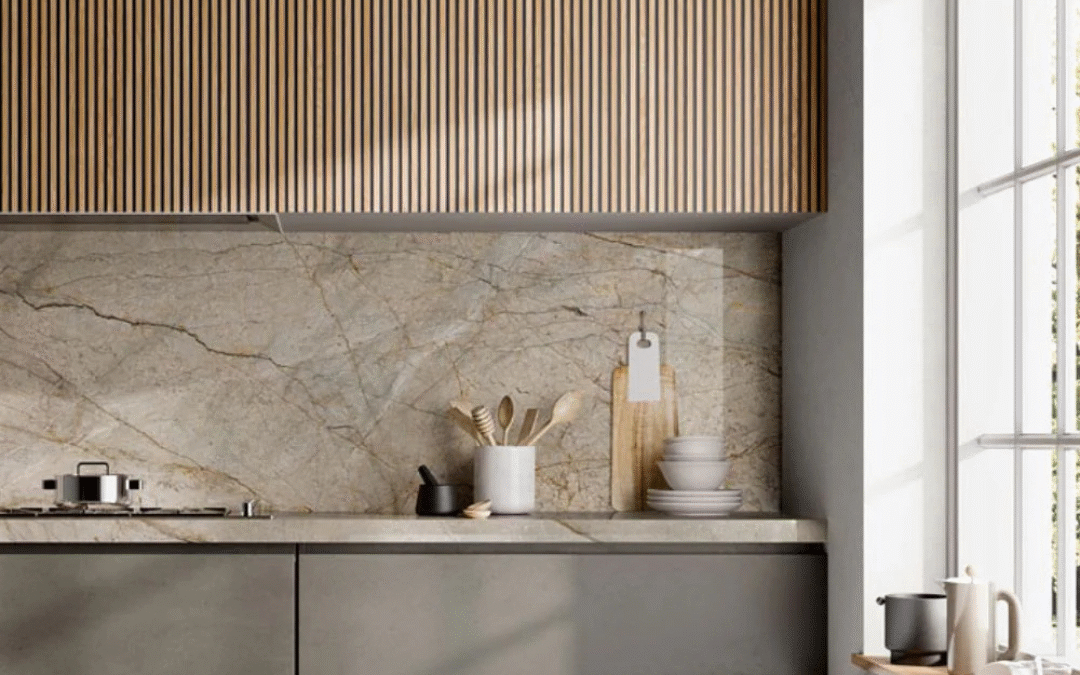
bathroom, blog, floors, kitchen, walls
When done right, statement tiles can elevate your home from ordinary to unforgettable. But there’s a fine line between bold and overwhelming. If you’re dreaming of eye-catching patterns or vibrant colours, the key is balance.
In this blog, we’ll explore how to use statement tiles in a way that feels stylish, not chaotic.
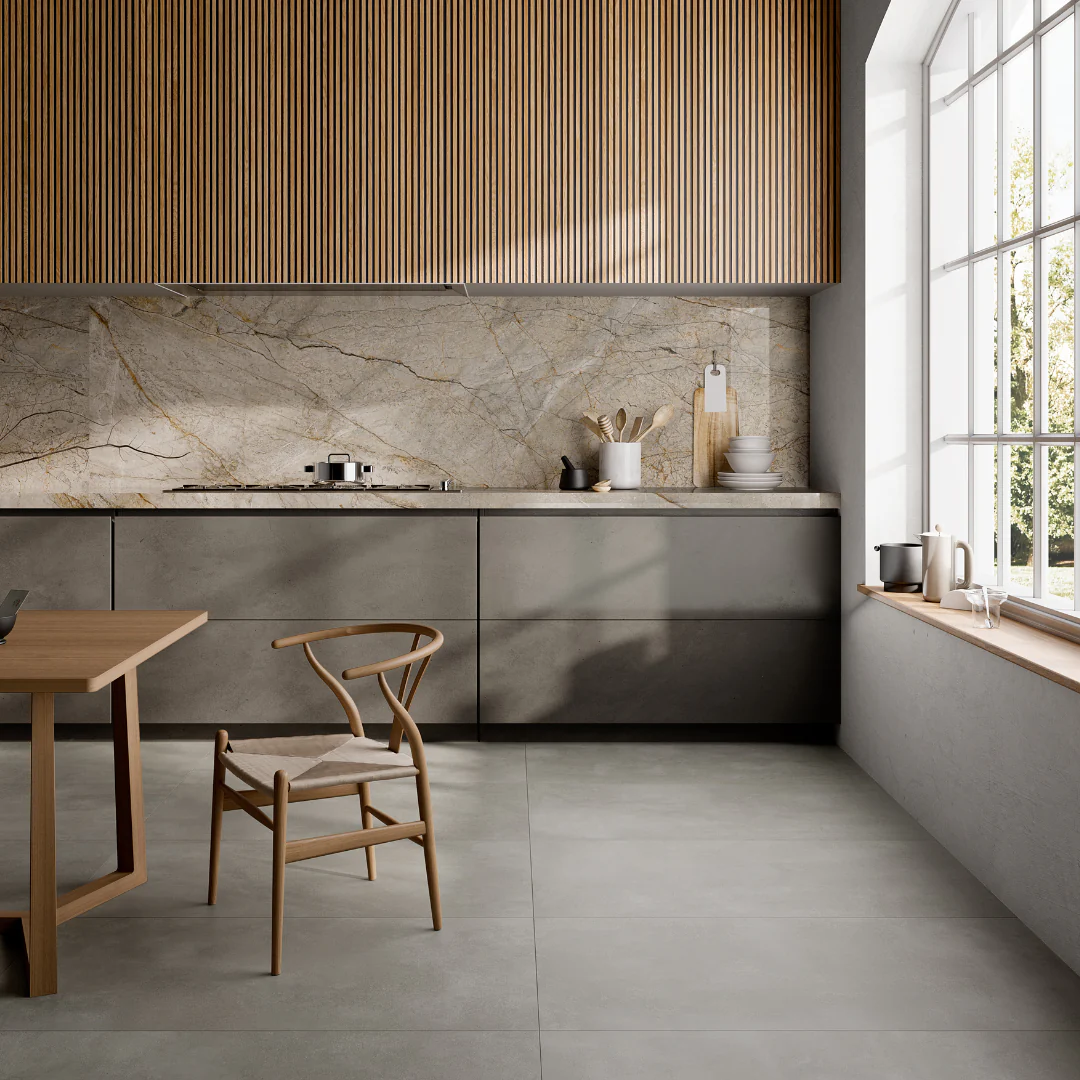
Table of Content:
What Are Statement Tiles?
Choose One Focal Point
Pair with Neutrals
Stick to a Colour Palette
Use Statement Tiles in Smaller Areas
Balance Patterns with Solids
Let Lighting Do the Talking
What Are Statement Tiles?
Statement tiles are tiles that draw attention. Think bold patterns, striking colours, unique shapes or textured finishes. They’re designed to be the focal point of a space — whether it’s a bathroom wall, a kitchen splashback or an entryway floor.
Choose One Focal Point
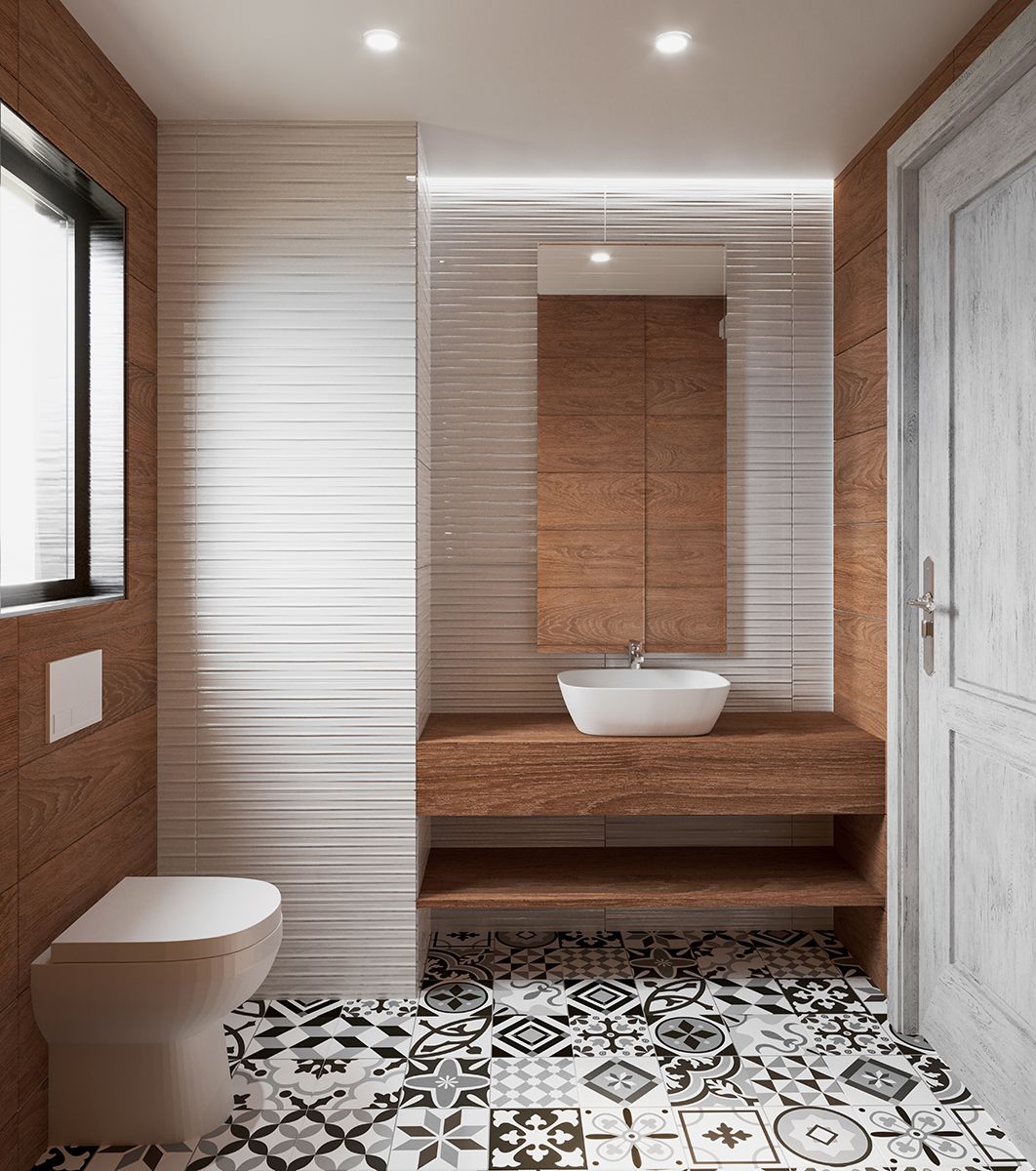
ribbons shiny 300 x 600 mm
The golden rule? One statement at a time. If you go big on the floor, keep your walls neutral. If your kitchen splashback steals the show, choose simpler cabinets and counters. This keeps the space feeling intentional rather than cluttered.
Try this: Use a bold patterned tile behind your stove or basin, and pair it with plain tiles around it. This lets the statement tile shine without competing for attention.
Pair with Neutrals
Statement tiles love a neutral companion. Whites, greys, beiges and earthy tones help tone things down and give your eyes a place to rest. By pairing your bold tile with a subtle backdrop, you let its beauty stand out without overpowering the space.
Bonus tip: Natural materials like wood or matte finishes can complement bold tiles beautifully.
Stick to a Colour Palette
Even the loudest tile can work if it fits your overall colour scheme. Whether you’re working with cool tones, warm hues or monochrome, make sure your statement tile ties in with other elements in the room — like your cabinetry, textiles or accessories.
Use Statement Tiles in Smaller Areas
Sometimes less really is more. Think about using statement tiles in smaller zones like:

A fireplace surround
These pockets of personality are perfect for playing with bold design without going overboard.
Balance Patterns with Solids

If your tile has a busy design, balance it with plain, solid colours. On the other hand, if your statement tile is a single bold colour, balance it with simple textures or shapes. This helps maintain a sense of calm and structure.
Let Lighting Do the Talking
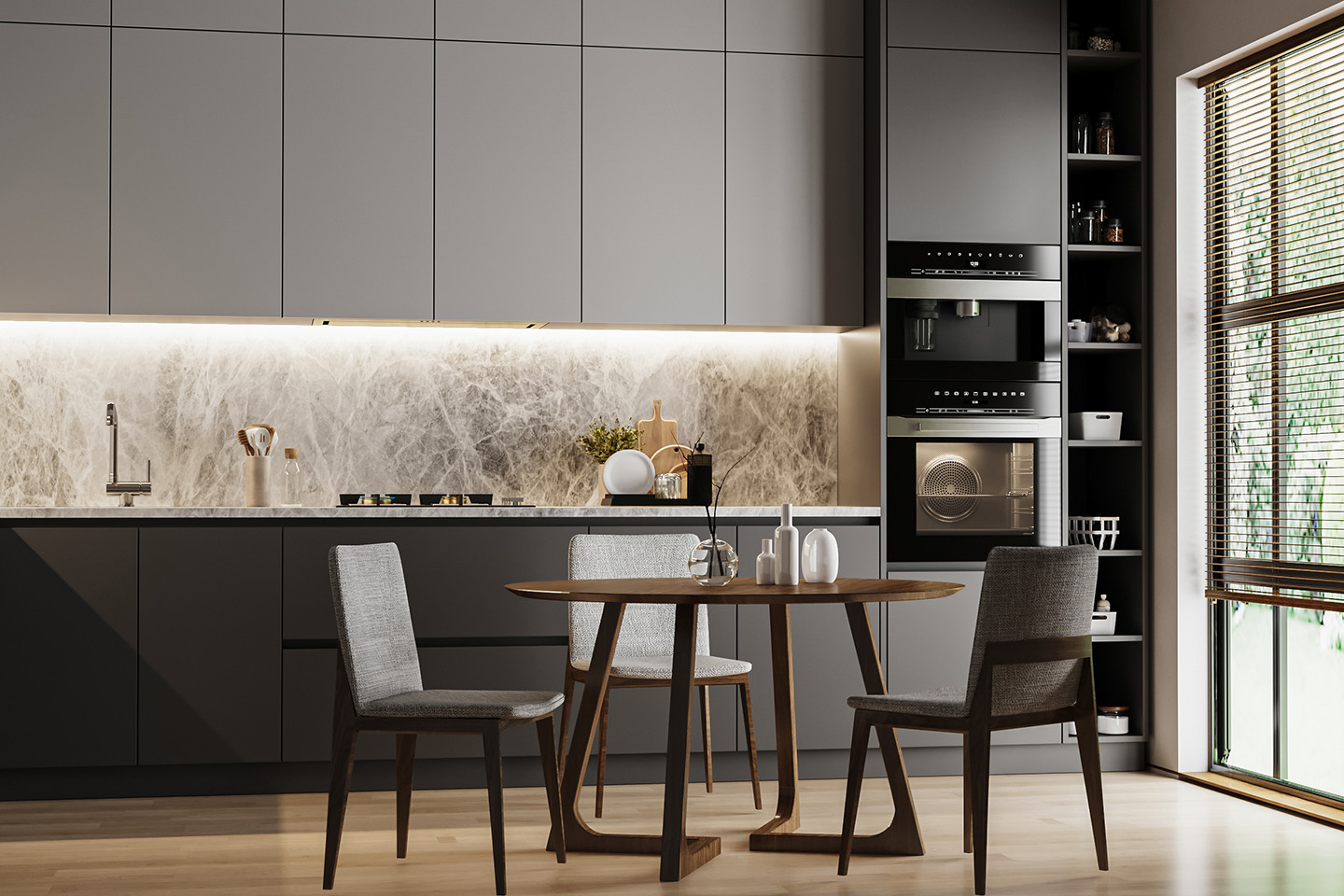
Lighting can either soften or highlight a statement tile. Soft, ambient lighting can make a bold tile feel more inviting. On the flip side, directional lighting can spotlight textures and patterns for extra drama — just make sure it suits the mood you’re after.
Statement tiles are a brilliant way to bring life and personality into your space. With the right planning, you can enjoy bold, beautiful design without overwhelming the room. Start small, choose your focal point and let your tiles do the talking.
Need help choosing the perfect statement tile?
Visit your nearest Tiletoria showroom or explore our curated tile collections online — we’ve got bold options for every taste and style.
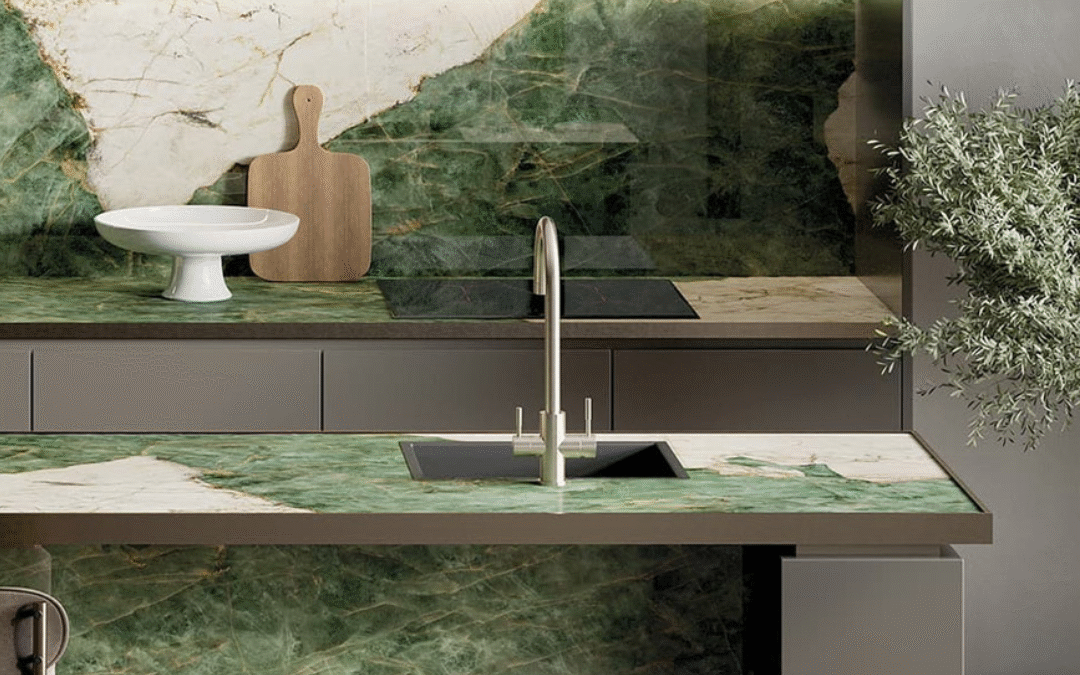
blog, kitchen
When you’re renovating or designing a kitchen, one of the most important decisions you’ll make is how to pair your countertops with the right tiles. Whether you’re going for a sleek modern look or something warm and traditional, the right combination can completely transform the space. It’s all about finding balance between style, function and personality.
In this guide, we’ll walk you through how to match your kitchen countertops with tiles that complement them beautifully.
Table of Content:
Start with Your Countertop
Stick to a Cohesive Colour Palette
Don’t Forget Texture and Finish
Consider Your Kitchen Style
Sample Before You Commit
Don’t Overlook Grout Colour
Browse our range of kitchen tiles
Start with Your Countertop
Your countertop is often the visual anchor of your kitchen, especially if you’ve chosen something bold like granite, quartz or marble. Because of its size and prominence, it usually makes sense to start here. Once you’ve locked in your countertop, you can look for tiles that enhance its colour, pattern and texture.
Tip: If your countertop has a busy pattern or bold veining, go for more subtle tiles to avoid visual clutter. On the other hand, if your countertop is plain or neutral, you can have more fun with tile colours, textures or patterns.
Stick to a Cohesive Colour Palette
Your tiles and countertop don’t have to match perfectly, but they should belong to the same colour family or have complementary tones. This helps create a sense of flow and harmony in your kitchen.
Light countertops
Light countertops (like white quartz or pale marble) pair well with soft neutral tiles, classic subway tiles or even pale pastels for a fresh, airy feel.
Dark countertops
The latest trend in kitchen design is pairing dark black or charcoal countertops with matching tiles on the walls for a seamless, modern aesthetic. Alternatively, using a dark tile in a similar tone creates a bold, dramatic look that feels both luxurious and contemporary. This monochromatic style adds depth and sophistication to your kitchen, especially when balanced with warm lighting or natural textures like wood.
Don’t Forget Texture and Finish
Tiles come in all sorts of finishes – glossy, matte, textured or smooth. The finish you choose will affect both the style and the practicality of your kitchen.
Glossy tiles
Glossy tiles reflect light and can make smaller kitchens feel brighter.
Matte tiles
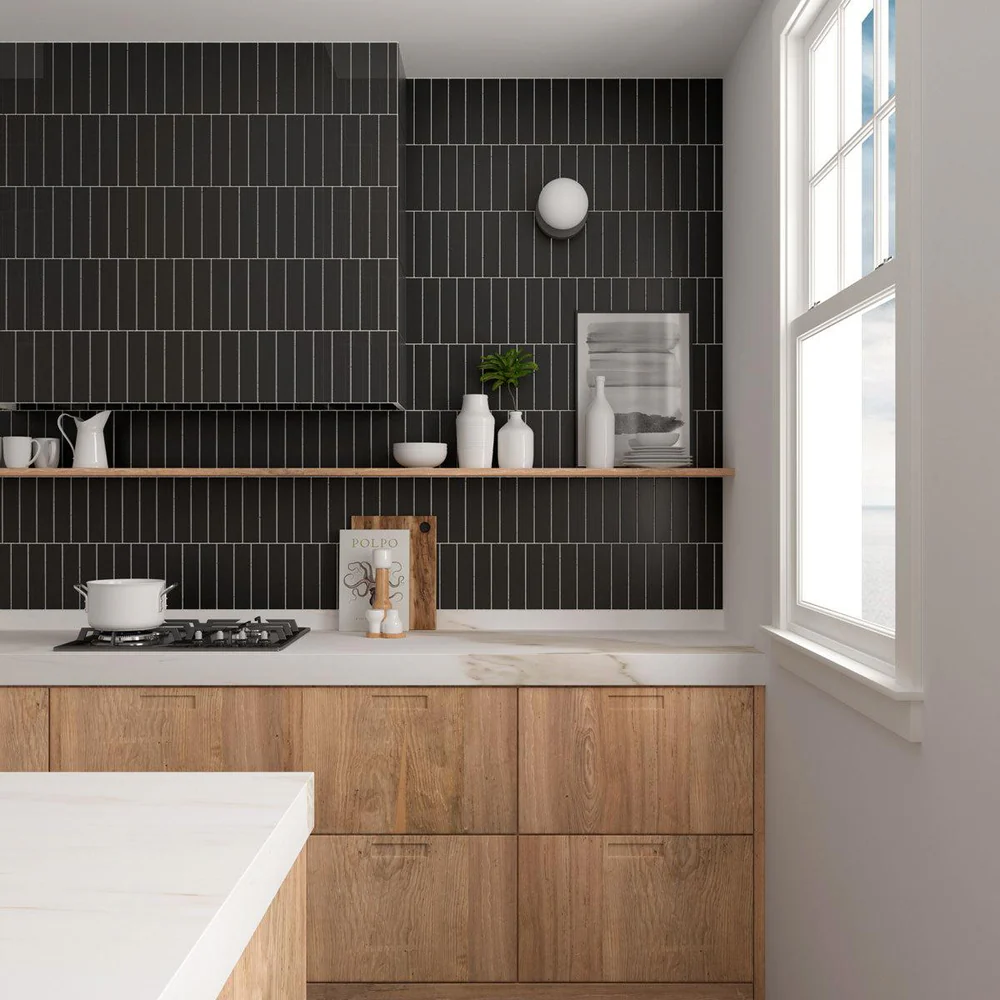
Matte tiles have a more understated, modern look and are great for hiding fingerprints.
Textured tiles
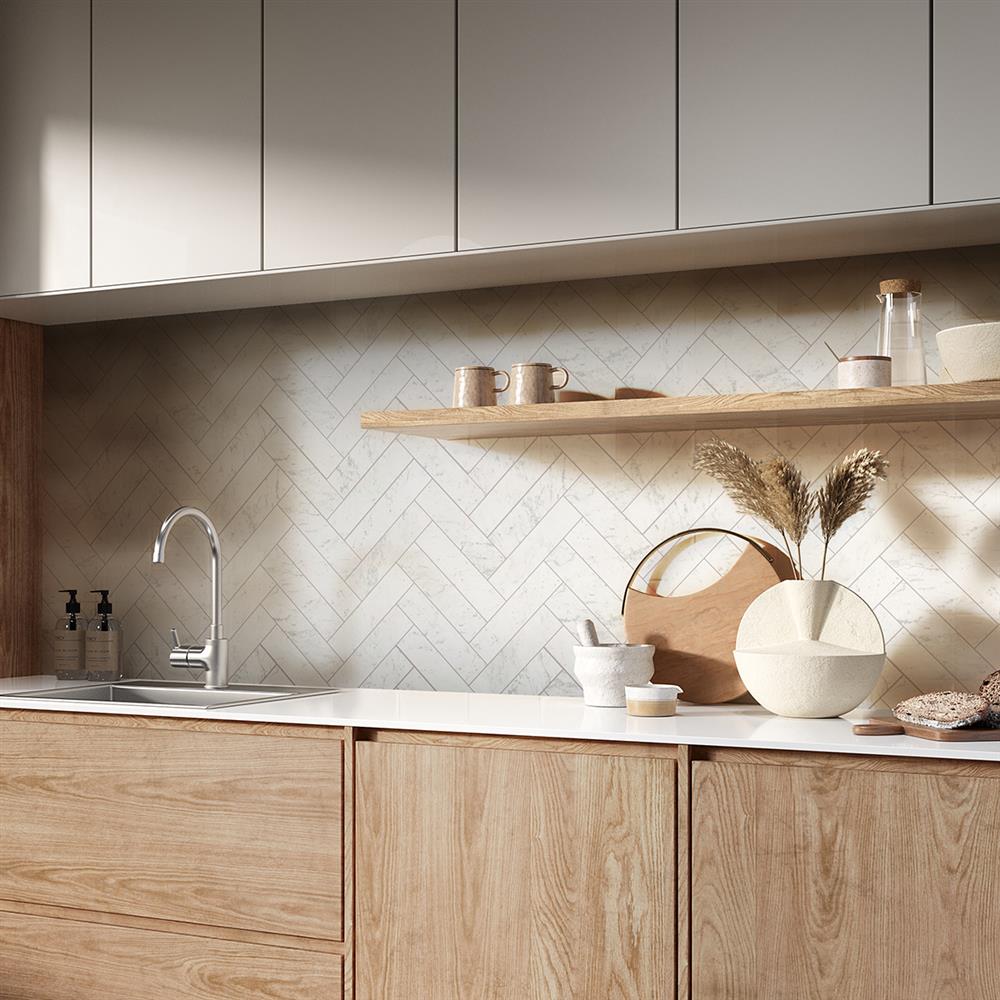
Textured tiles can add depth and interest, especially if your countertop is very sleek.
Try to mix finishes thoughtfully. For example, pairing a polished stone countertop with matte or handcrafted-looking tiles creates a pleasing contrast.
Consider Your Kitchen Style
Think about the overall style you want for your kitchen. Your countertop and tiles should both support that vision.
Modern kitchens
Try pairing a waterfall quartz countertop with large format porcelain tiles or sleek metro tiles in a stacked layout.
Rustic or farmhouse kitchens
A wooden or concrete-look countertop works beautifully with handmade-style tiles or mosaic patterns.
Classic kitchens
Marble-look countertops paired with traditional subway tiles never go out of style.
If you love making a statement, try combining a patterned tile splashback with a minimalist countertop to let the tiles shine.
Sample Before You Commit
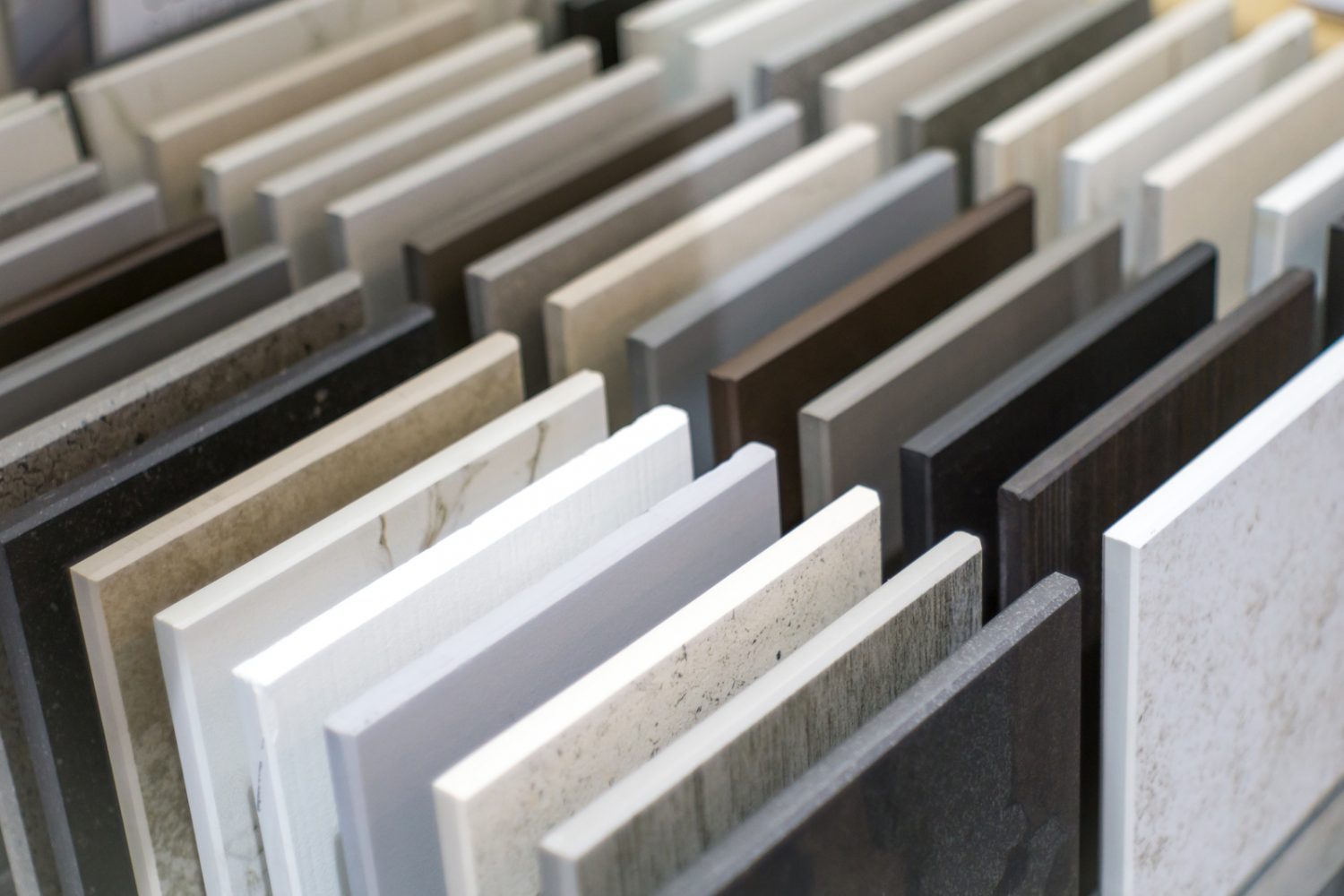
Always order tile and countertop samples before making a final decision. Place them side by side in your kitchen and observe them at different times of the day. Natural light, artificial light and shadows can all affect how colours and finishes appear.
Don’t Overlook Grout Colour
Grout is the unsung hero of tile design. It might seem like a small detail, but it can make a big difference in the final look. Light grout will blend in and keep things subtle, while dark grout adds contrast and makes the tile pattern pop.
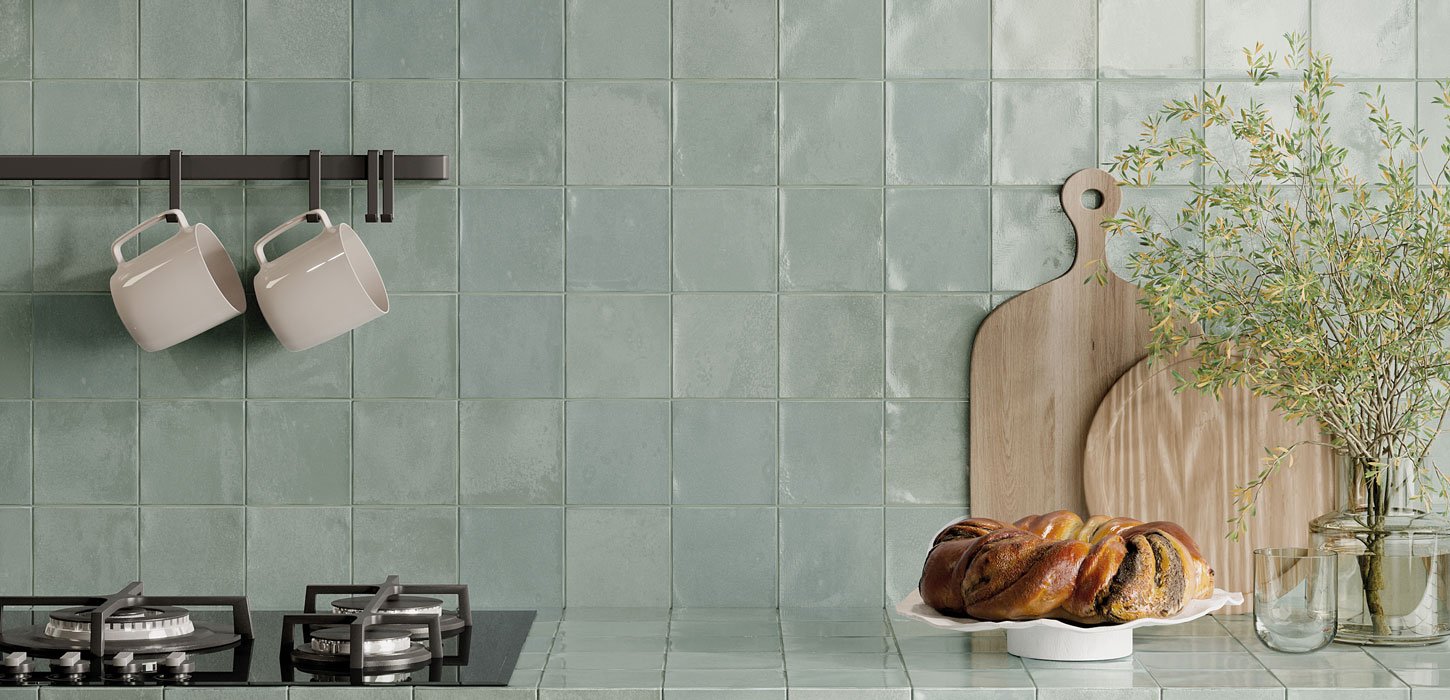
Make sure your grout colour complements both your tiles and countertop to create a polished, cohesive look.
Matching your kitchen countertops with the right tiles doesn’t have to be overwhelming. It’s about finding balance between colour, texture and style. With the right combination, you’ll create a kitchen that’s not only functional but also a true reflection of your taste.
Need help choosing the right tiles? Visit your nearest Tiletoria showroom or browse our online collection for inspiration, expert advice and the perfect tiles to complete your dream kitchen.
Browse our range of kitchen tiles

bathroom, blog, how to articles, kitchen
Choosing the perfect tap finish can completely transform your kitchen or bathroom. With so many options available, it can feel overwhelming to decide between brass, chrome or matte black. Each finish has its own look, benefits and care needs.
In this guide, we’ll help you pick the right tap finish that suits your style, practical needs and budget.
Table of Content:
Why Tap Finish Matters
Brass Taps: Timeless Warmth and Luxury
Chrome Taps: Sleek and Reflective
Matte Black Taps: Bold and Contemporary
Tips for Choosing the Right Tap Finish
Browse our range of Bathroom Taps
Browse our range of Kitchen Taps
Why Tap Finish Matters
The finish on your tap isn’t just about looks. It also affects durability, maintenance and how well the tap fits with the rest of your space. The right finish can highlight your design theme and add personality to your room, while the wrong one might clash or require too much upkeep.
Brass Taps: Timeless Warmth and Luxury
Brass taps bring a warm golden glow that feels classic yet trendy. They work well in traditional, vintage or industrial-style bathrooms and kitchens. Brass has a natural resistance to corrosion and can develop a charming patina over time.
Pros:
Cons:
-
Can be pricier than other finishes
-
Needs occasional polishing to keep shine
-
May show water spots if not wiped regularly
Brass taps pair beautifully with warm colour schemes, wooden cabinets and natural stone surfaces.
Chrome Taps: Sleek and Reflective
Chrome is the most popular tap finish for good reason. Its shiny, reflective surface creates a clean and modern look that fits almost any style from minimalist to classic. Chrome taps are easy to clean and resistant to tarnishing.
Pros:
-
Affordable and widely available
-
Easy to clean and maintain
-
Reflective surface brightens the space
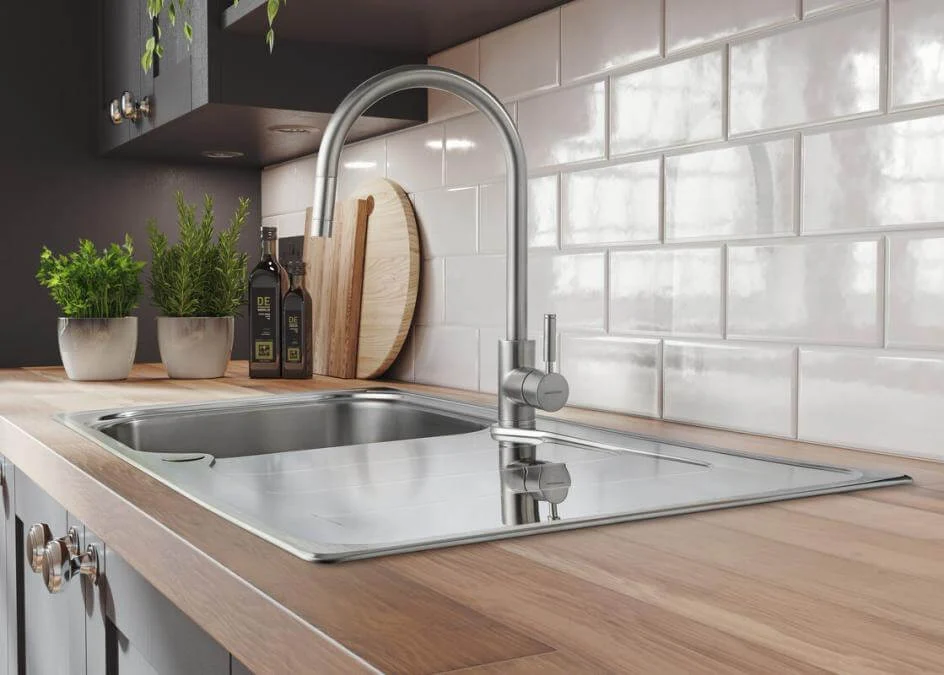
Cons:
-
Shows fingerprints and water spots easily
-
Can feel cold or clinical if overused
-
Scratches can be noticeable
Chrome taps work well in bathrooms and kitchens with neutral or cool colour palettes and modern fixtures.
Matte Black Taps: Bold and Contemporary
Matte black taps are a favourite for contemporary and industrial designs. Their bold, understated look creates a striking contrast against light tiles or countertops. Matte finishes also hide fingerprints and water marks better than shiny surfaces.
Pros:
-
Makes a strong style statement
-
Hides fingerprints and water spots
-
Works well with a variety of colours and materials
Cons:
Matte black taps look stunning against white or light-coloured sinks, natural wood and concrete surfaces.
Tips for Choosing the Right Tap Finish
Consider your existing fixtures
Aim for consistency with your cabinet handles, light fittings and other metal details.
Think about style and mood
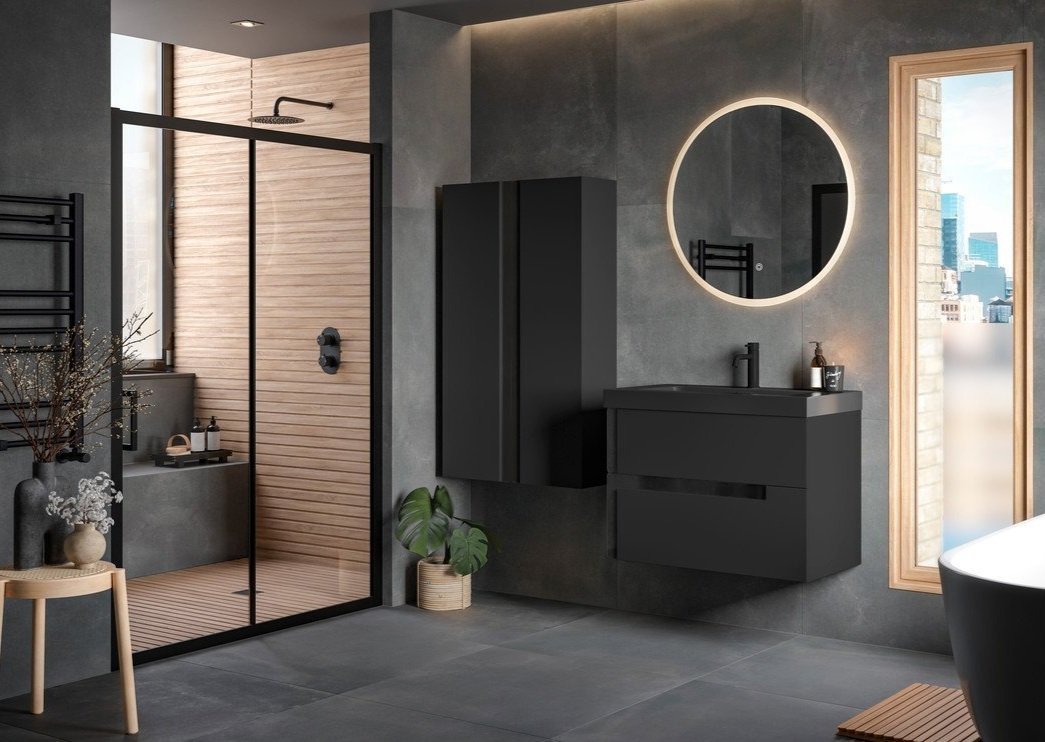
Brass adds warmth, chrome keeps things sleek and bright, while matte black brings drama and modern edge.
Factor in maintenance
Chrome is easiest to clean but shows water spots. Matte black hides marks but requires gentle cleaning. Brass needs occasional polishing.
Match your colour scheme
Choose a finish that complements or contrasts tastefully with your tiles, countertops and cabinetry.
Your choice of tap finish has a big impact on the look and feel of your space. Brass, chrome and matte black all offer unique styles and benefits. Think about your personal style, practical needs and existing décor to find the perfect match. Whether you want classic warmth, shiny modernity or bold drama, the right tap finish will help you create a kitchen or bathroom you love.
Ready to upgrade your taps? Explore our wide range of stylish finishes and find your perfect fit today!
Browse our range of Bathroom Taps
Browse our range of Kitchen Taps
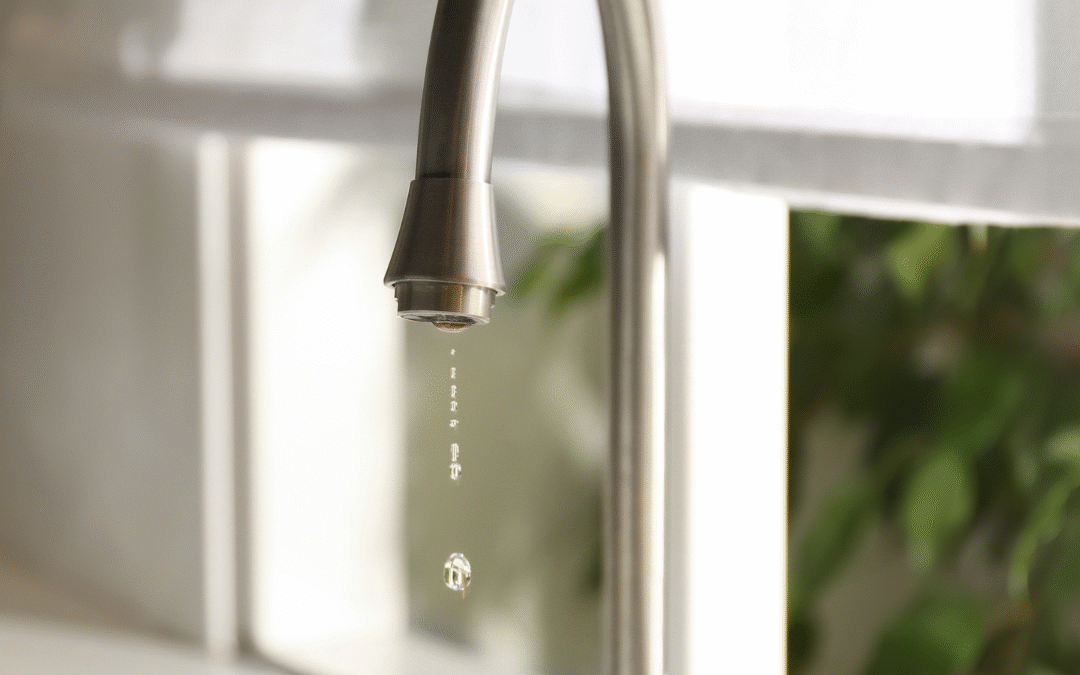
bathroom, blog, kitchen
There’s nothing more irritating than the constant drip, drip, drip of a leaking tap. Not only is it a waste of water, it can also add to your utility bills over time. The good news? You can often fix a dripping kitchen or bathroom tap yourself without much fuss. The better news? If things get tricky, you’ll know exactly when to call a plumber.
Let’s break it down step-by-step.
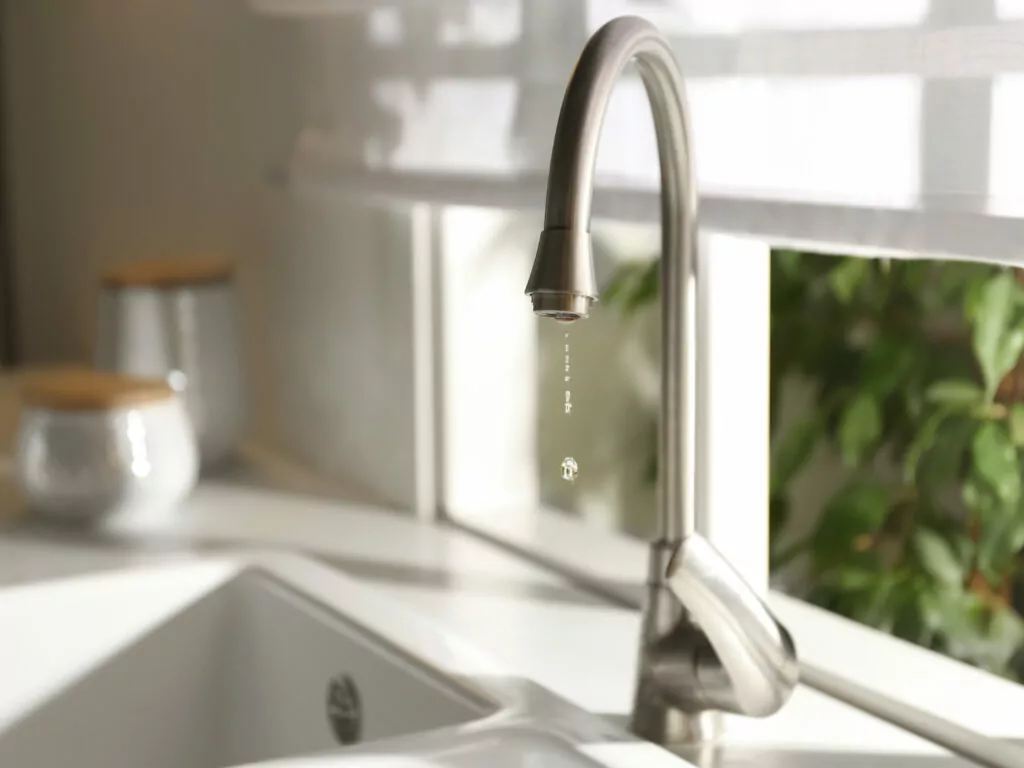
Table of Content:
Why Is My Tap Dripping?
What You’ll Need to Fix a Leaking Tap
How to Fix a Dripping Tap: Step-by-Step
When to Call a Plumber
Why Is My Tap Dripping?
A dripping kitchen or bathroom tap is usually caused by one of these common issues:
A worn-out washer or O-ring
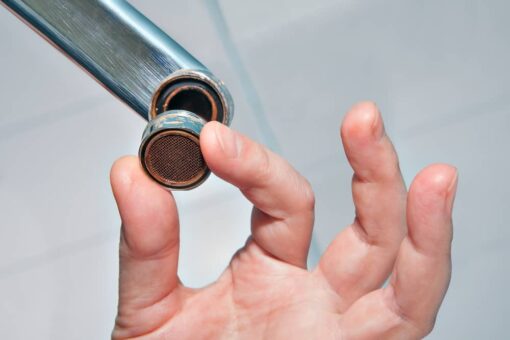
A faulty ceramic disc cartridge
Loose or corroded parts
High water pressure
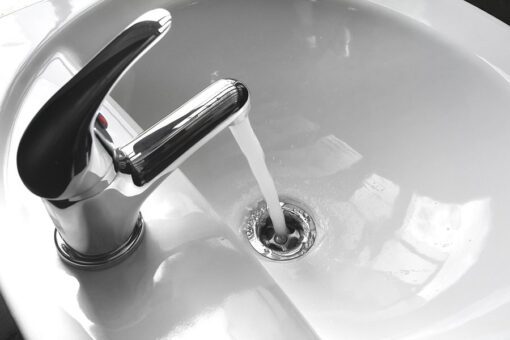
These problems sound complicated but many are quick and affordable to fix at home.
What You’ll Need to Fix a Leaking Tap
Before you begin, gather the following:
Adjustable spanner or wrench
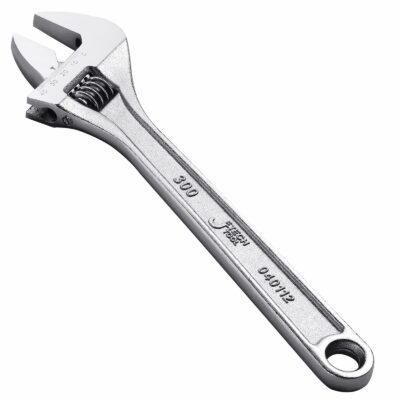
Flathead and Phillips screwdrivers
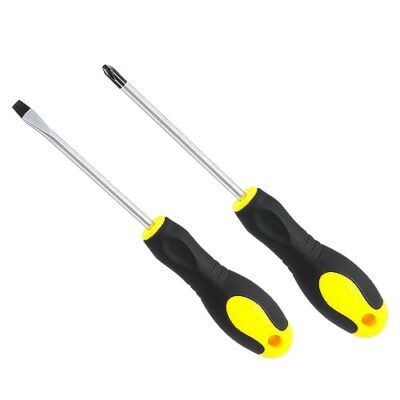
Replacement washer or cartridge (depending on your tap type)

Allen key (for some mixer taps)
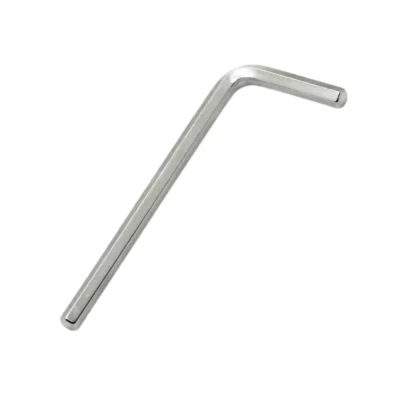
A cloth or towel to protect surfaces
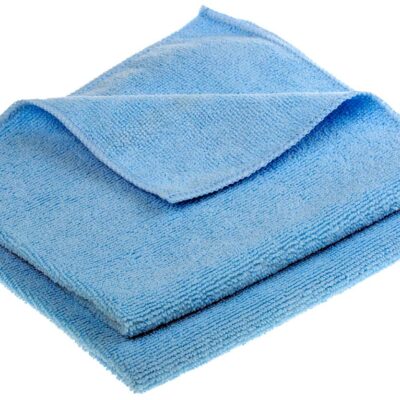
Plumber’s grease (optional but helpful)
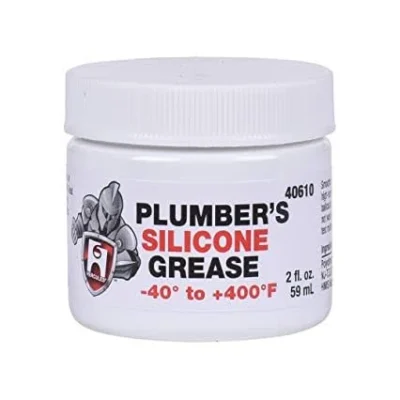
How to Fix a Dripping Tap: Step-by-Step
1. Turn Off the Water Supply
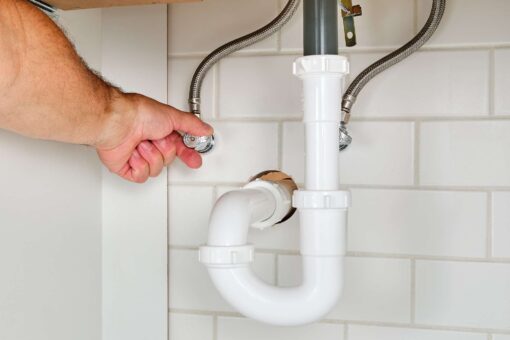
Look under your sink and find the isolation valve. Turn it clockwise to shut off the water. If you can’t find it, turn off the main water supply for your home.
2. Plug the Sink/Basin
You don’t want any small parts falling down the drain, so plug the sink/basin or cover the drain with a cloth.
3. Remove the Tap Handle
Use a screwdriver or Allen key to take off the tap handle. You might need to pop off a decorative cap to access the screw.
4. Identify the Problem
Once the handle is off, you’ll see the tap mechanism. If your tap uses a rubber washer, inspect it for wear or damage. If it’s a ceramic disc tap, check the cartridge.
5. Replace the Damaged Part

-
For washer taps: Unscrew the valve, remove the old washer and replace it with a new one of the same size.
-
For ceramic disc taps: Replace the entire cartridge with a new one compatible with your tap brand.
Tip: Take the old part with you to a plumbing store if you’re unsure about size or type.
6. Reassemble the Tap
Put everything back in the reverse order. Make sure all parts are tight but don’t overtighten — this could cause damage.
7. Turn the Water Back On
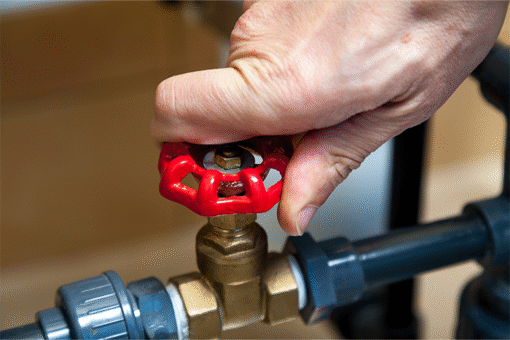
Slowly turn the isolation valve back on and check for leaks. If the drip is gone, you’ve done it right.
When to Call a Plumber
Sometimes, a dripping tap is just the tip of the iceberg. Call a professional plumber if:
-
The tap continues leaking after replacing parts
-
You notice water damage under the sink
-
The plumbing connections are corroded or rusty
-
You can’t identify the type of tap or cartridge
-
You’re dealing with high water pressure or noisy pipes
A plumber will fix the issue properly and help prevent future damage, saving you time and money in the long run.
Fixing a dripping kitchen tap or bathroom tap is a simple DIY job in many cases. With a few tools and a little patience, you can stop that annoying drip and enjoy a quiet, functional kitchen or bathroom again. But if things feel too technical or you’re unsure, don’t hesitate to call a plumber.
Whether you’re renovating your kitchen or bathroom, or just maintaining your home, knowing how to handle small plumbing issues makes a big difference.
Looking to upgrade your kitchen or bathroom taps or need expert plumbing advice? Browse our range of kitchen taps and bathroom taps or get in touch with our team — we’re here to help.
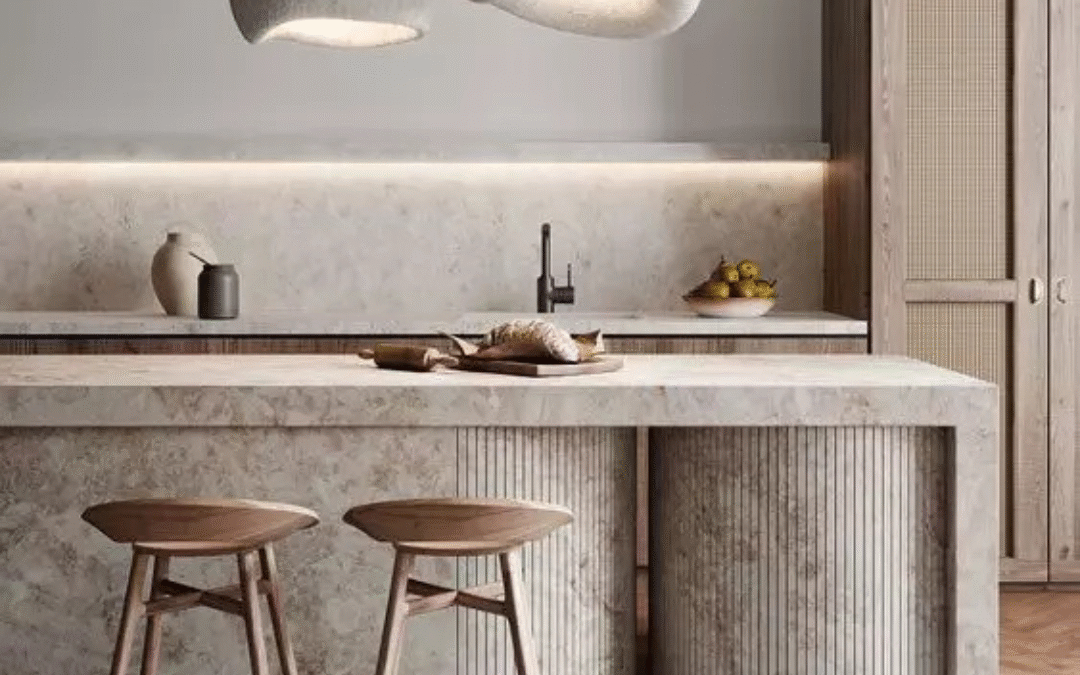
bathroom, blog, interior design tips, kitchen, trends
There’s a new style on the interior design scene, and it’s winning over homeowners and designers alike. Meet Japandi — the perfect blend of Japanese minimalism and Scandinavian functionality. If you’re looking for a calm, clutter-free and timeless look in your home, Japandi might be exactly what you need.
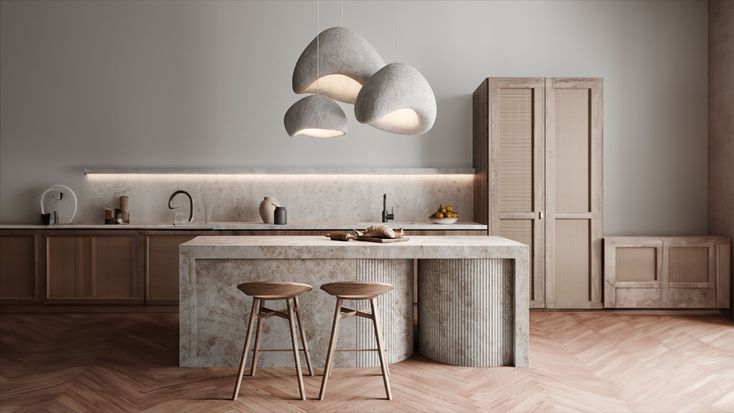
Table of Content:
What Is Japandi Style?
Why Is Japandi Gaining Popularity?
How to Bring Japandi into Your Home
Japandi in Every Room
Tiles and Japandi
Browse our collection of Japandi-inspired pieces
What Is Japandi Style?
Japandi is a fusion of two design philosophies.
On one side, you have Japanese interior design — simple, elegant and rooted in nature.
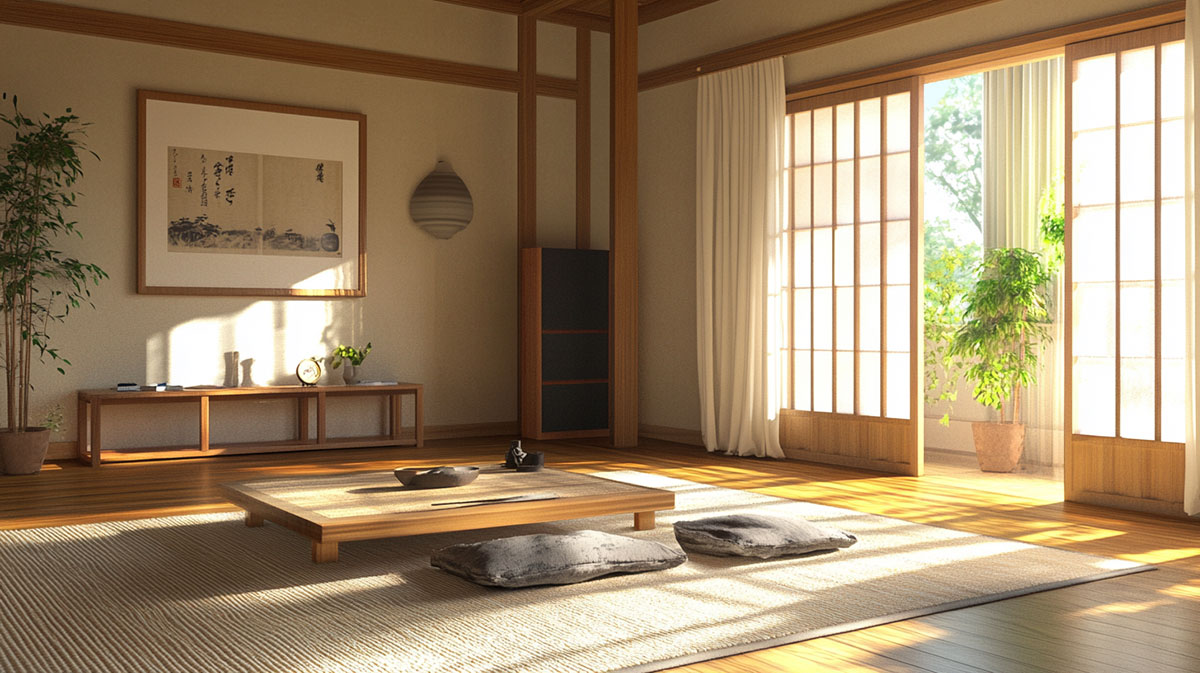
Image credit: awedeco.com
On the other, you have Scandinavian style — warm, functional and focused on comfort.
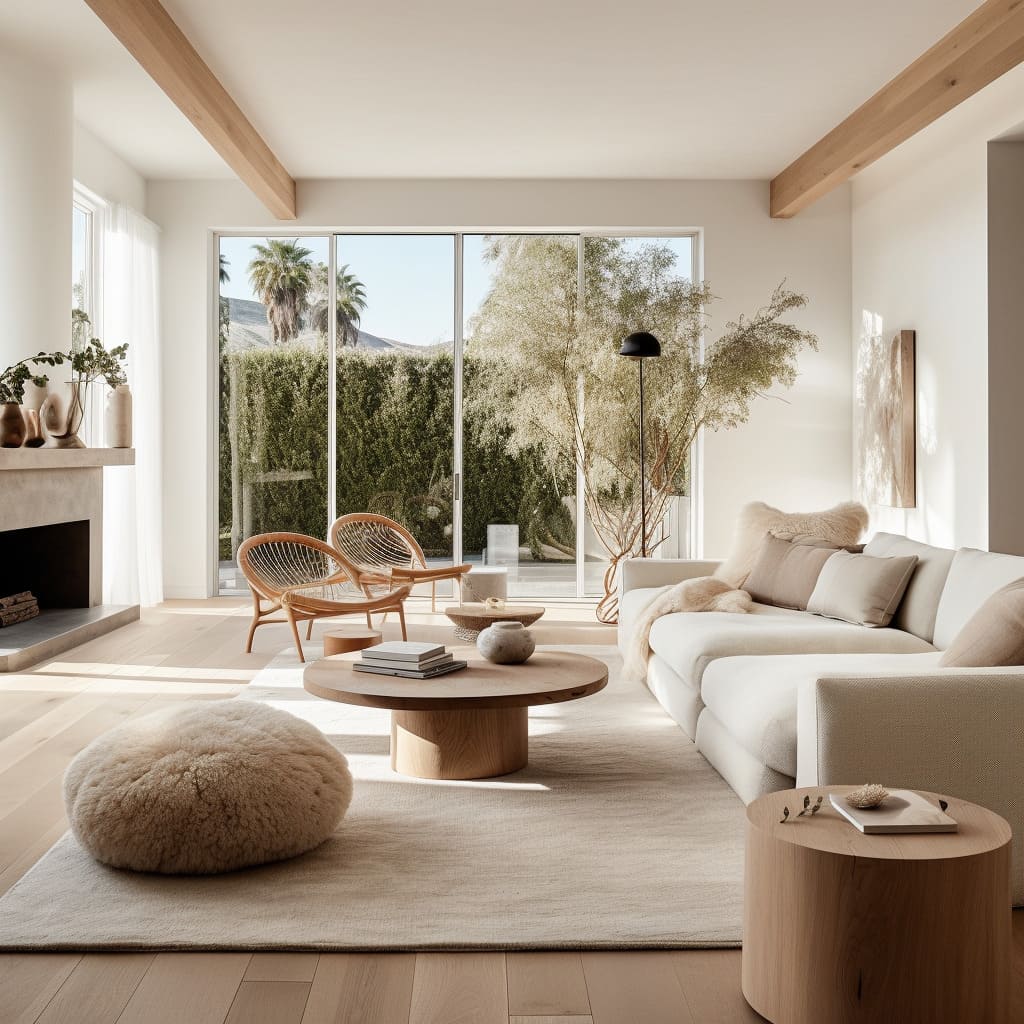
Image credit: fancyhouse-design.com
Together, they create a space that feels both modern and lived-in.
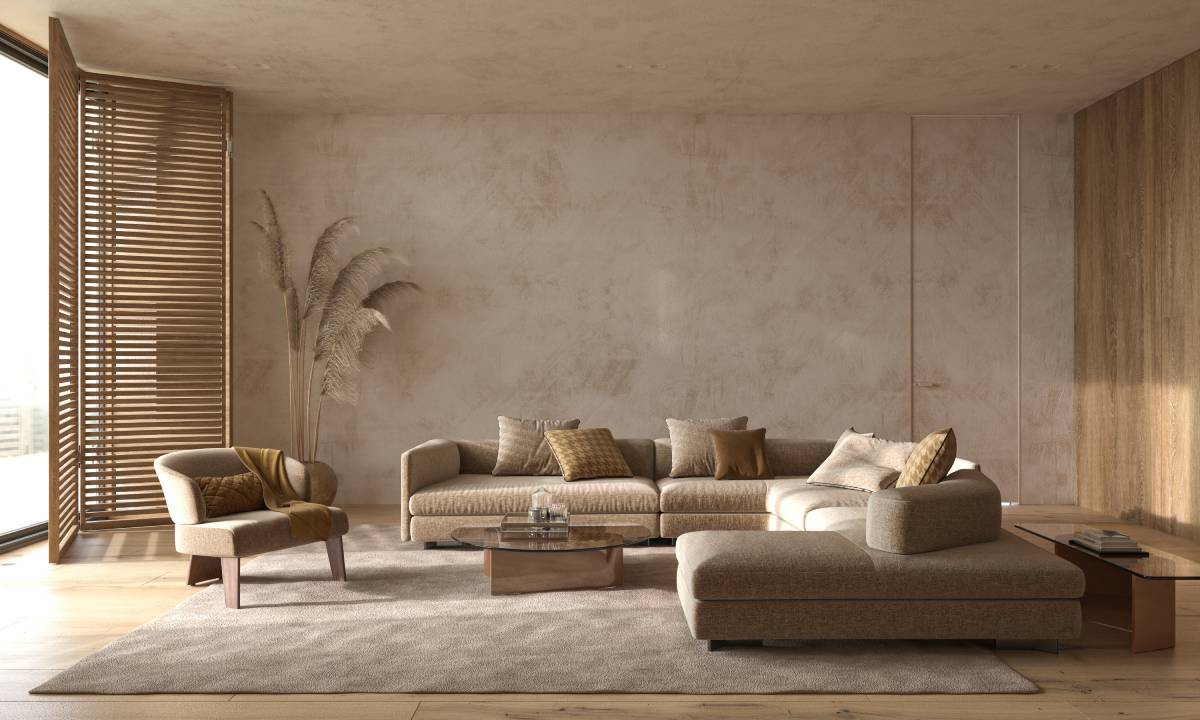
The Japandi trend focuses on clean lines, natural materials and muted colours. It values craftsmanship over mass production and encourages intentional living — only keeping what’s necessary and meaningful.
Why Is Japandi Gaining Popularity?
In today’s fast-paced world, many people are looking for ways to create a more calming and grounded home environment. Japandi offers exactly that. It’s not about filling your home with things — it’s about choosing the right things.
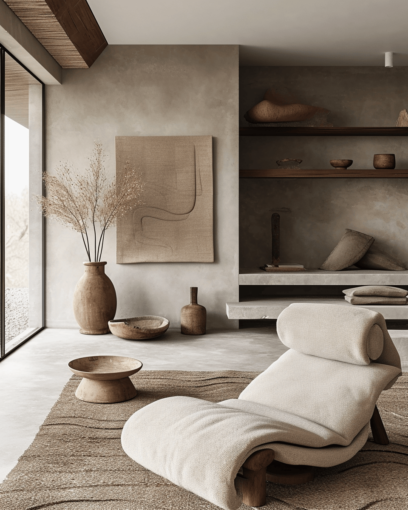
Image credit: edwardgeorgelondon.com
Minimalist yet cosy, Japandi interiors promote wellbeing. Think soft linen throws, warm wood tones and stone finishes. Neutral colour palettes dominate the look, with shades of beige, taupe, sage green and charcoal taking centre stage.
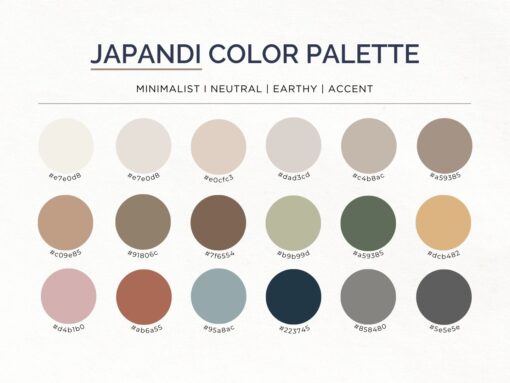
Image credit: global.fujioh.com
The rise in sustainable living has also played a role. Japandi leans into eco-conscious design — using natural fibres, recycled materials and quality over quantity.
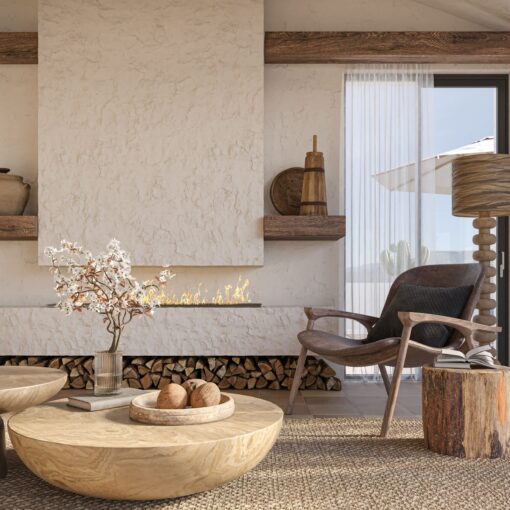
Image credit: annarosemann.com
How to Bring Japandi into Your Home
You don’t need a full renovation to try this trend. Small changes can go a long way.
Start with decluttering
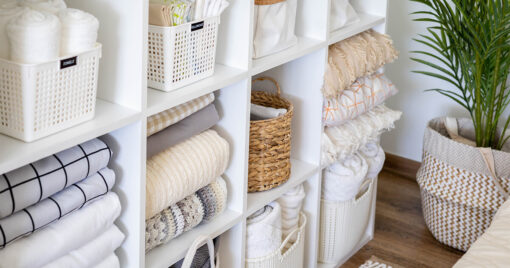
Image credit: edmontonrealestatepro.ca
Keep only the essentials and clear your surfaces.
Choose quality materials
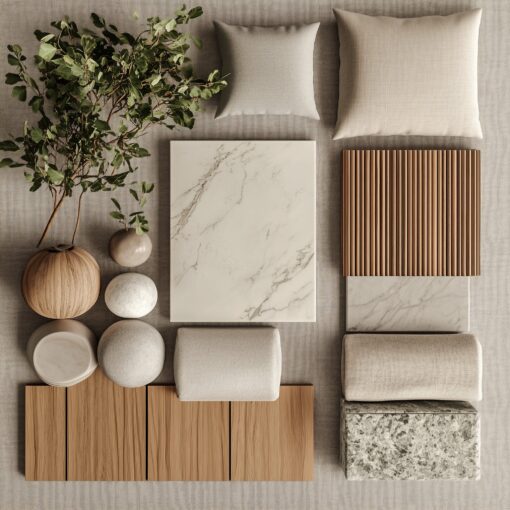
Image credit: global.fujioh.com
Invest in wood, linen, stone and ceramic.
Use a muted colour palette
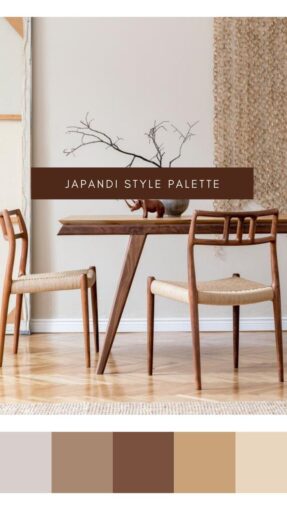
Image credit: Pinterest:@KunitsaHome
Stick to earthy tones like terracotta, sand and grey.
Add plants
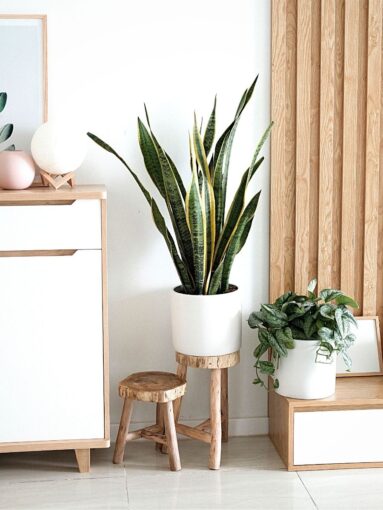
Image credit: thursd.com
Nature is central to Japandi, so bring in greenery with simple planters.
Focus on function
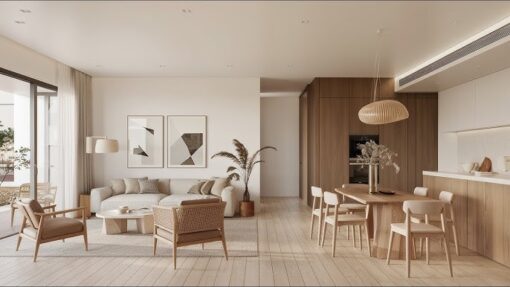
Image credit: houseploy.com
Every piece should serve a purpose and look good doing it.
Japandi in Every Room
Living Room
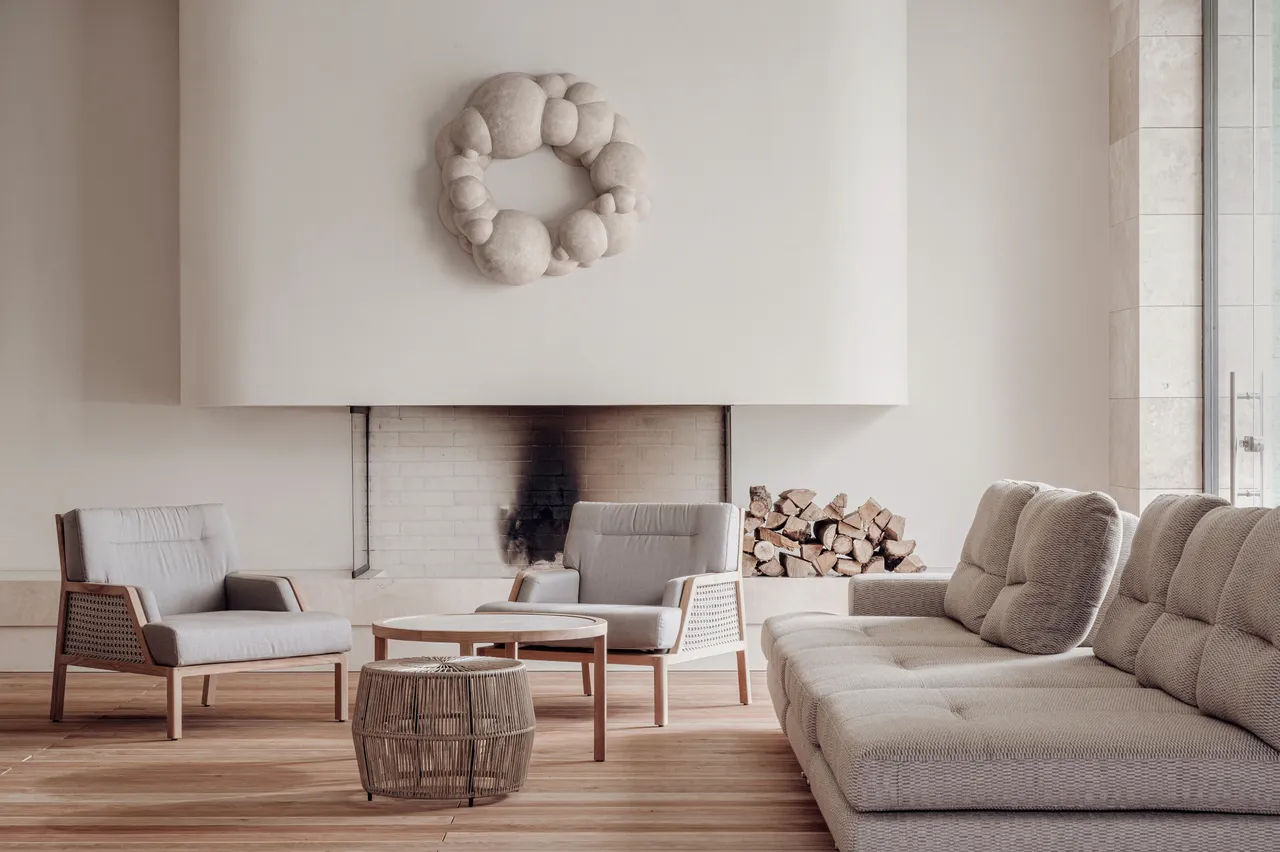
Image credit: livingetc.com
Go for low-profile furniture, woven textures and neutral cushions.
Bedroom
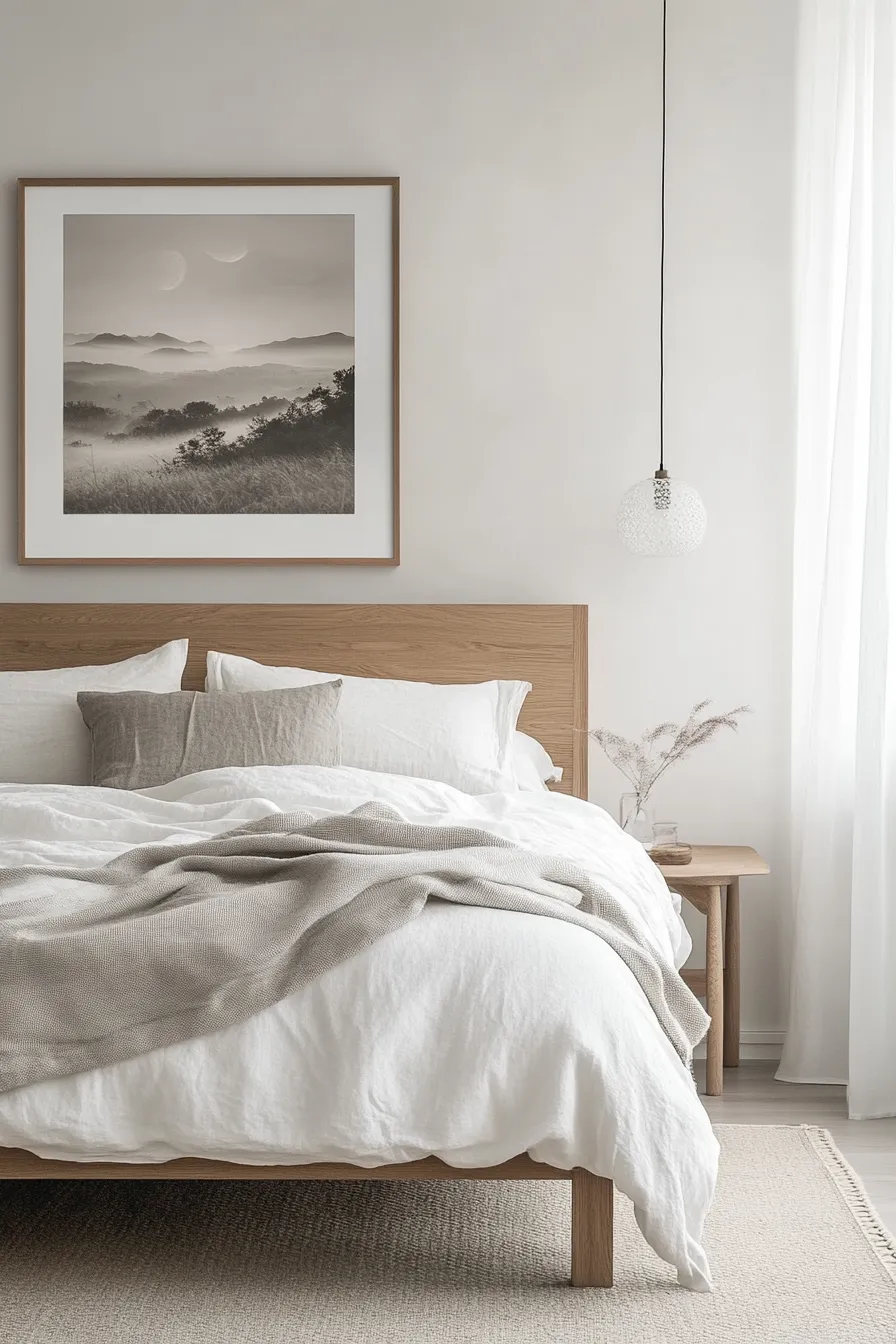
Image credit: edwardgeorgelondon.com
Keep it serene with soft lighting, crisp bedding and a calming palette.
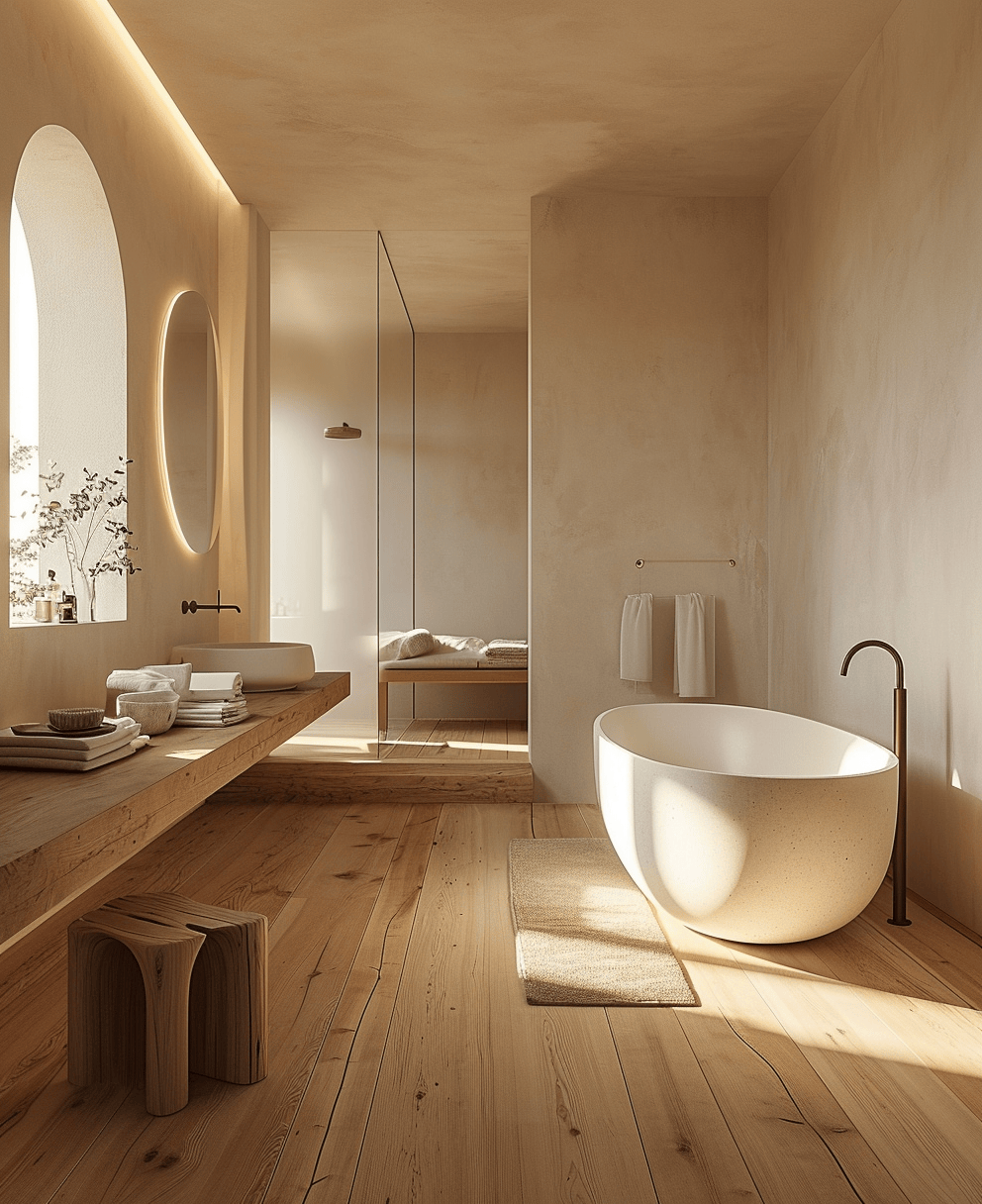
Image credit: edwardgeorgelondon.com
Choose clean finishes, minimal décor and natural touches like wood or stone.
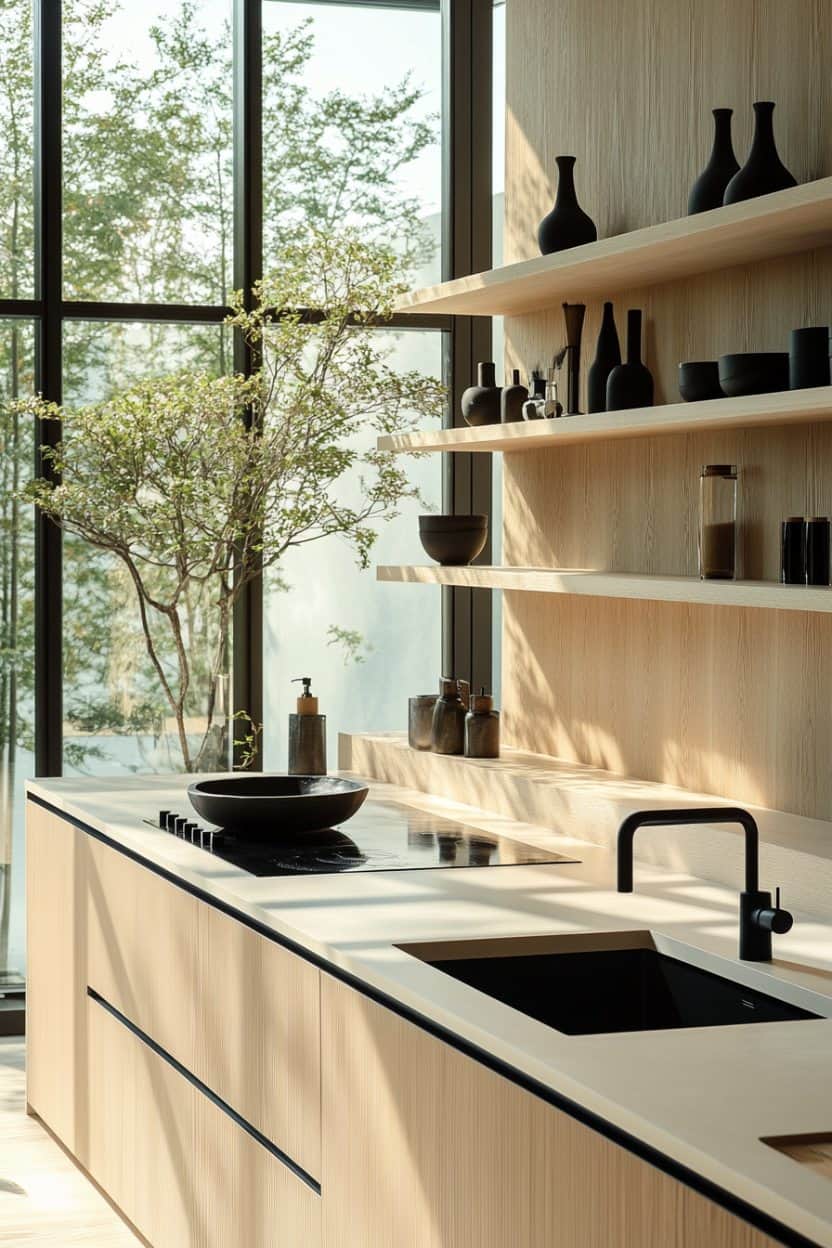
Image credit: hello-hayley.com
Pair sleek surfaces with warm wood cabinets and matte black fixtures.
Tiles and Japandi
Tiles are a great way to embrace the Japandi aesthetic. Think large format stone-look tiles for floors, soft textured wall tiles or handmade ceramic splashbacks. Matte finishes work best to avoid too much shine. You want the space to feel natural and calm, not glossy and loud. Wood-look vinyl, laminate or engineered wood flooring also fits perfectly with the Japandi style, offering the warmth of timber with added durability and easy maintenance — ideal for creating that serene, minimalist feel.
Japandi isn’t just a trend — it’s a lifestyle shift. It’s about stripping back the noise and embracing simplicity, comfort and mindfulness in the way we live. Whether you’re redesigning a single room or your entire home, Japandi offers a timeless and peaceful solution.
Looking for tiles or design elements that suit the Japandi style? Bring your moodboard or Pinterest inspo to our showroom and we’ll help you choose pieces that bring your vision to life. Browse our collection of Japandi-inspired pieces below to get started.
Browse our collection of Japandi-inspired pieces
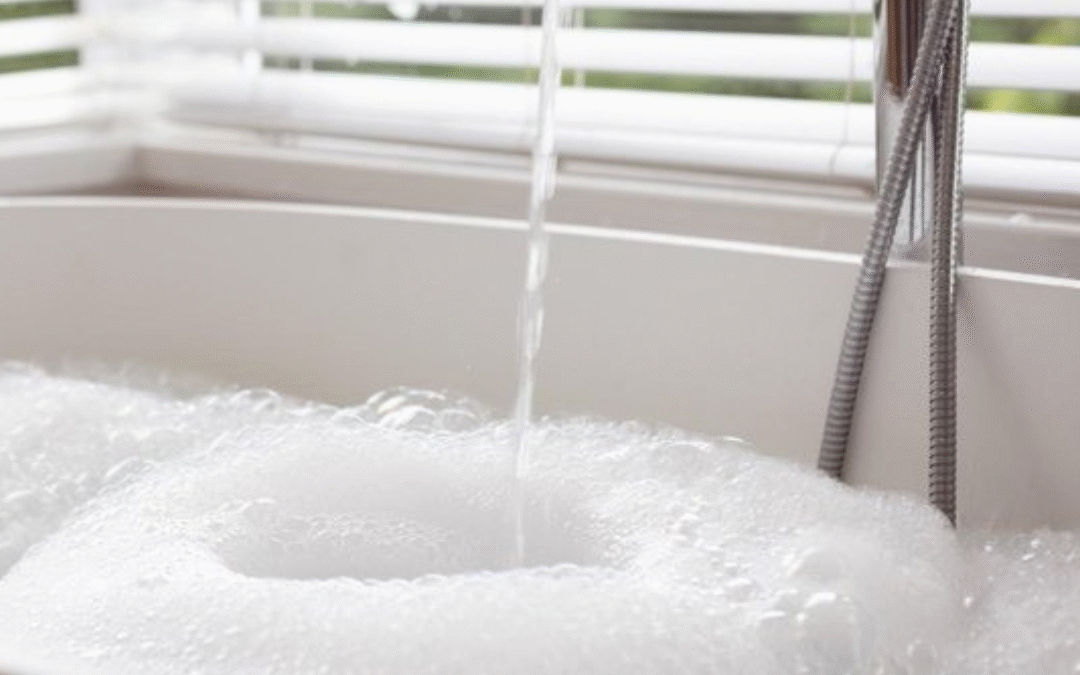
bathroom, blog, kitchen
Ever turned on a tap and wondered why the water dribbles out slowly or blasts out with unexpected force? The answer lies in water pressure — a crucial factor that affects everything from your morning shower to how efficiently your kitchen tap fills the kettle. Understanding water pressure helps you get the best performance from your taps and ensures your plumbing system runs smoothly.
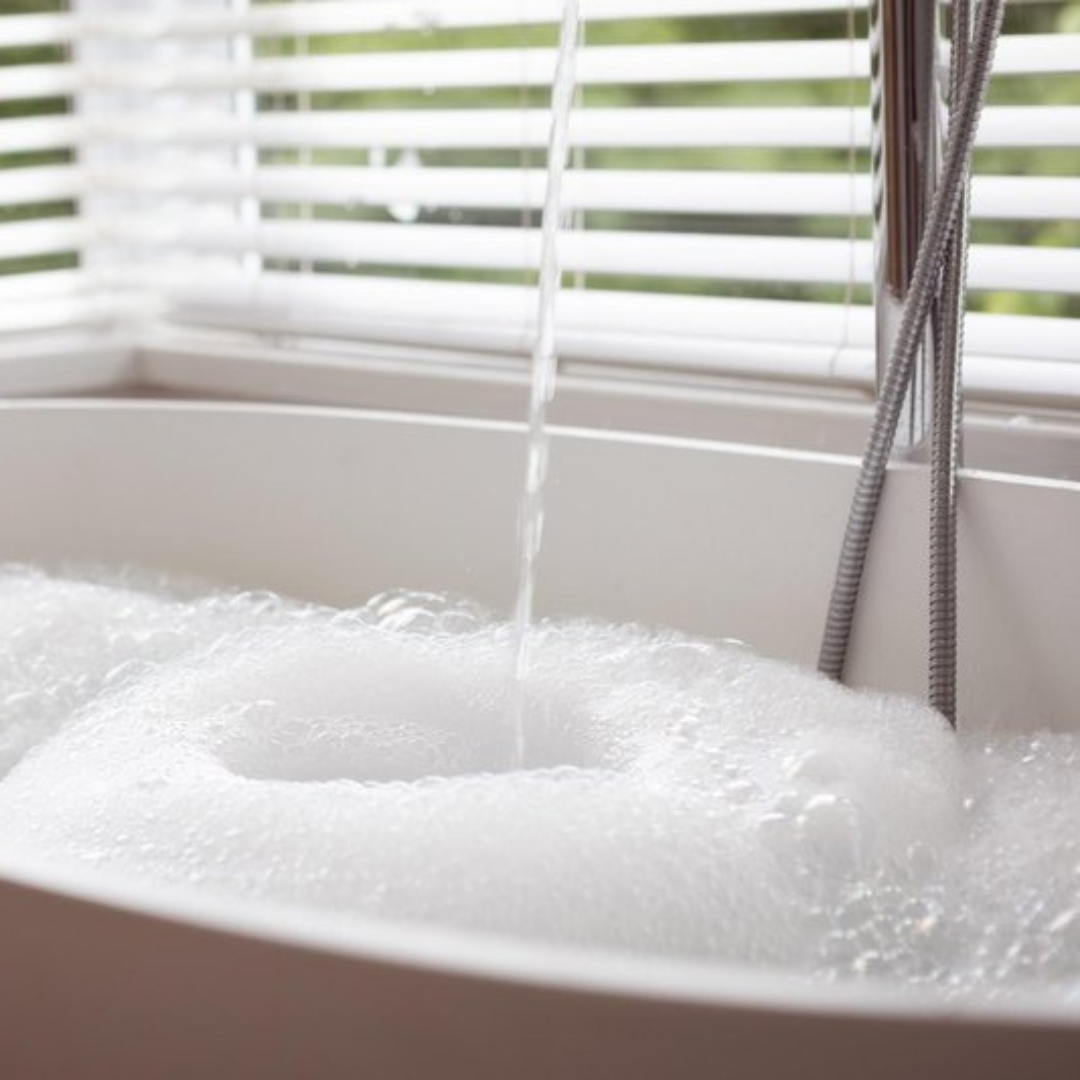
Table of Content:
What is Water Pressure?
Why Water Pressure Matters for Your Taps
Common Signs of Pressure Problems
Causes of Low or High Water Pressure
How to Check Your Water Pressure
Tips for Maintaining Optimal Tap Performance
Tap Performance and Water-Saving Features
Browse our range of Bathroom Taps
Browse our range of Kitchen Taps
What is Water Pressure?
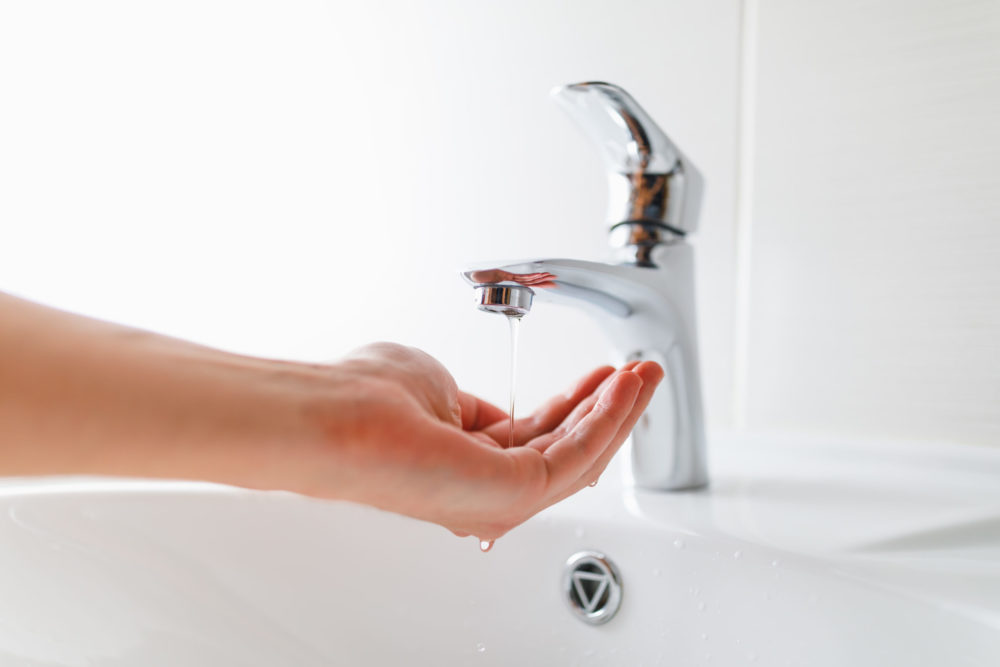
Water pressure is the force that pushes water through your pipes and out of your taps. It’s measured in bars, with one bar roughly equal to the pressure needed to raise water 10 metres. If your pressure is too low, your taps may trickle. If it’s too high, you could end up wasting water or even damaging fixtures.
Why Water Pressure Matters for Your Taps
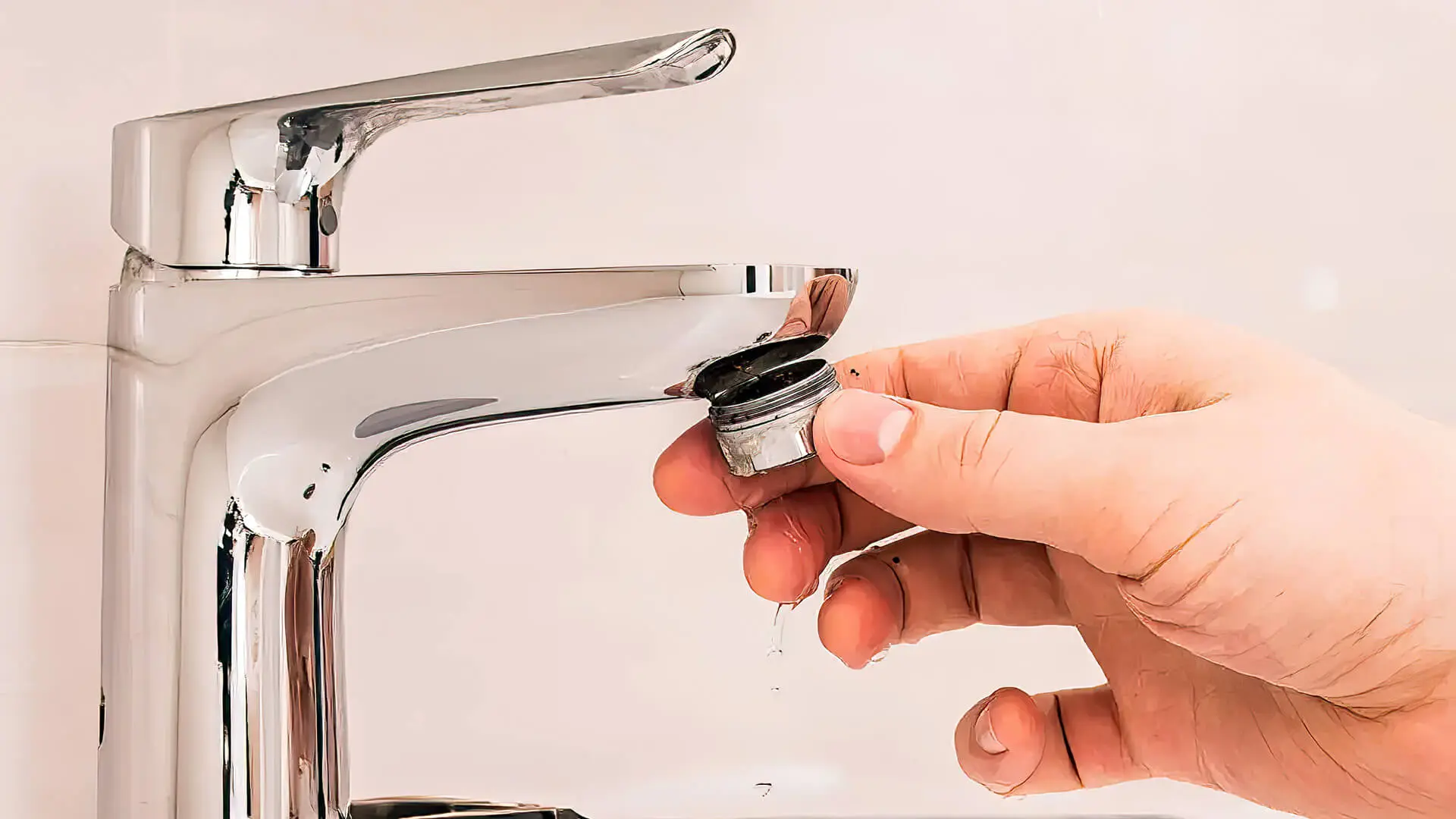
Your taps are designed to work best within a certain pressure range. Too little pressure and you’ll find washing dishes, rinsing vegetables or even brushing your teeth frustrating. Too much pressure can create splashing, noise and unnecessary strain on seals and valves.
Common Signs of Pressure Problems
Here’s what to look out for:
Low pressure
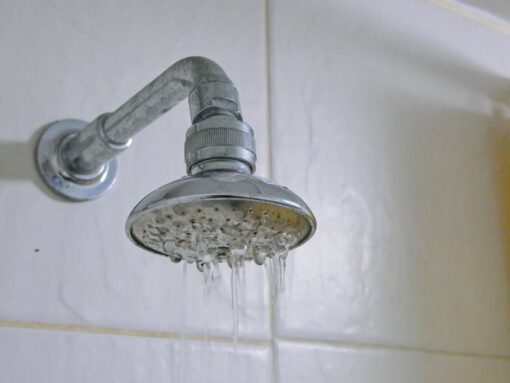
Slow flow, weak showers, inconsistent temperature.
High pressure
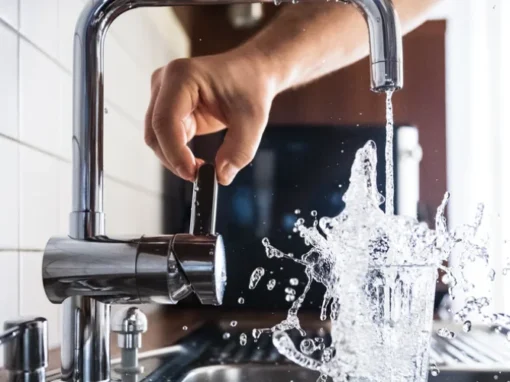
Noisy pipes, banging sounds (also known as water hammer), leaks from taps or fittings.
Spotting these issues early can save you time and money on repairs.
Causes of Low or High Water Pressure
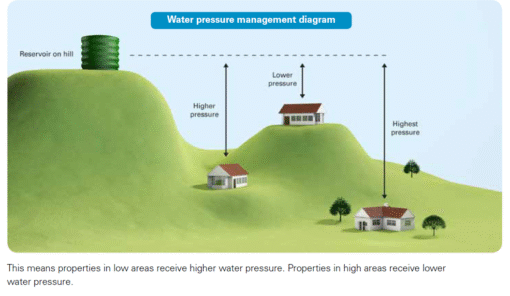
Image credit: ilanwater.com.au
Several factors affect your home’s water pressure:
Mains supply
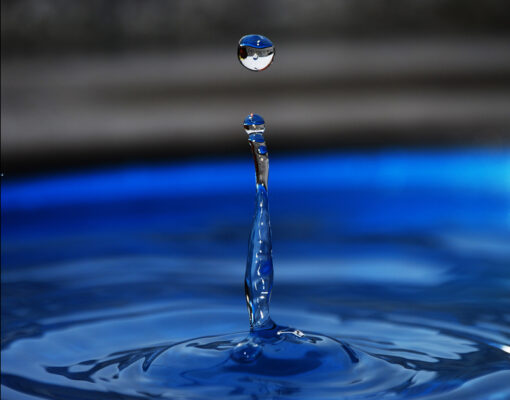
The water company’s supply pressure can vary depending on your location and time of day
Pipework
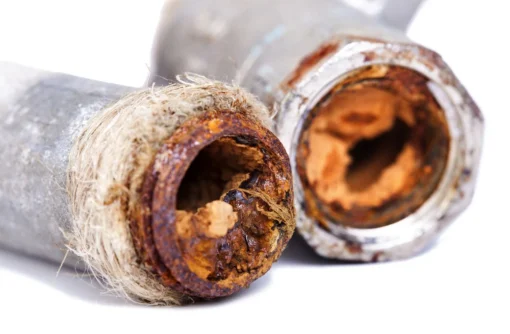
Narrow or corroded pipes can restrict flow
Leaks
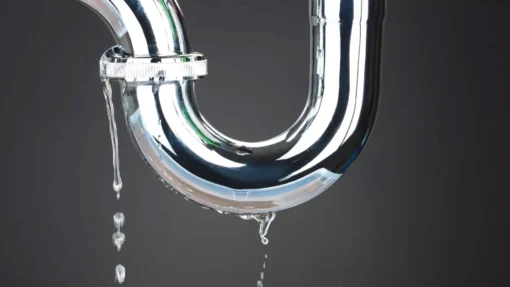
Even small leaks reduce pressure throughout your system
Appliance demand
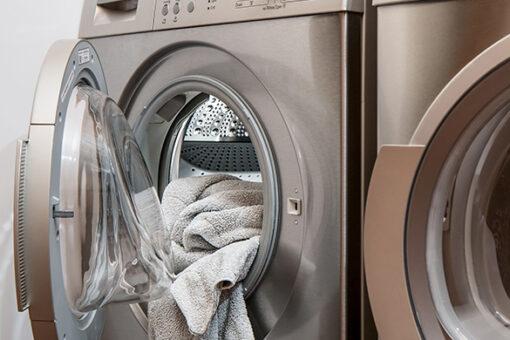
Running multiple taps or appliances at once lowers available pressure
How to Check Your Water Pressure
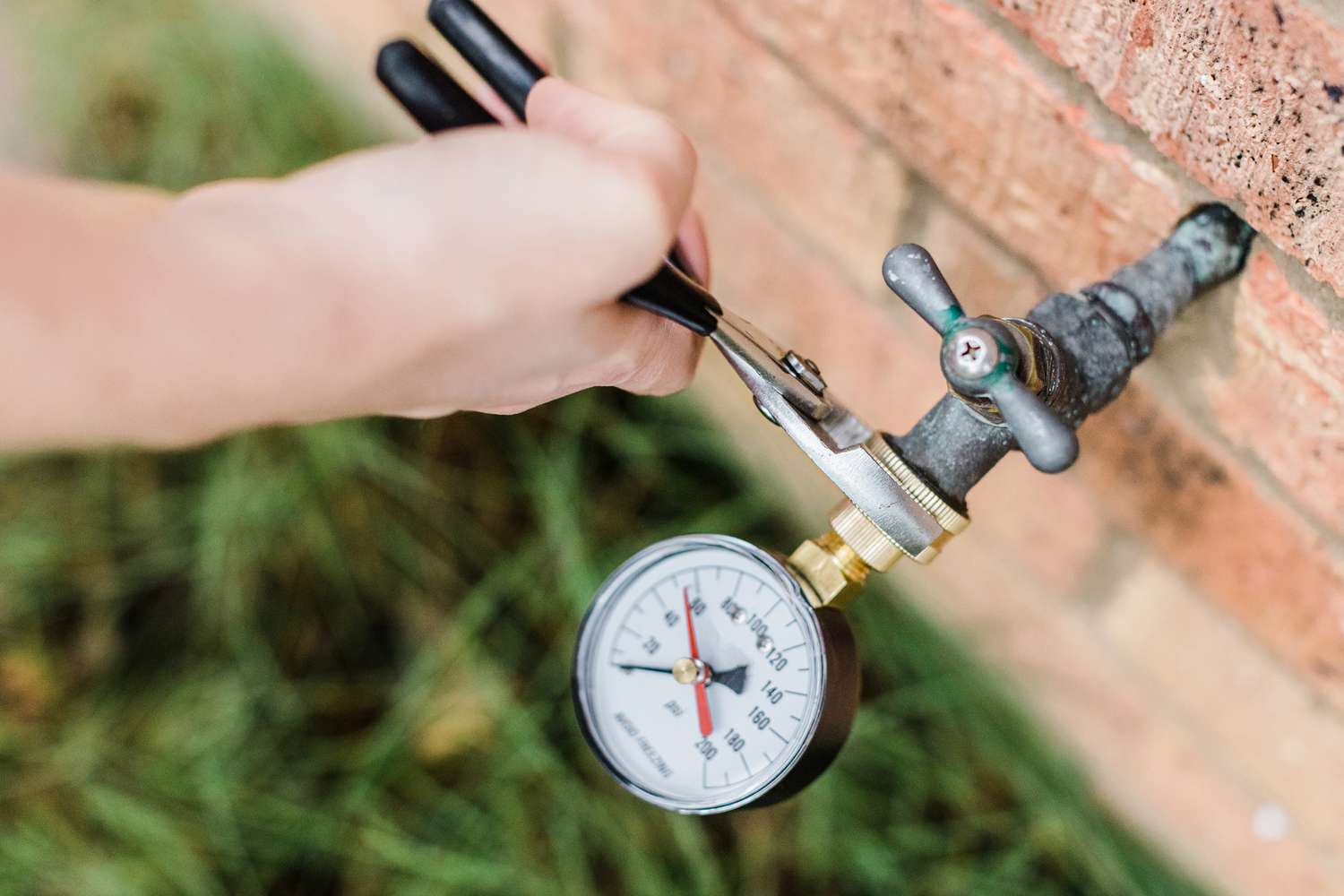
You can test your home’s water pressure using a simple pressure gauge. Attach it to an outdoor tap or washing machine outlet to get a reading. The ideal pressure for most homes is between 1 and 3 bars. If it’s too high or too low, it might be time to consult a plumber or install a pressure regulator.
Tips for Maintaining Optimal Tap Performance
Install pressure regulators

These help control overly high pressure
Clean aerators

Mineral build-up can restrict flow from the tap head
Check for leaks

Regularly inspect taps and pipes for dripping or damp spots
Upgrade your tap
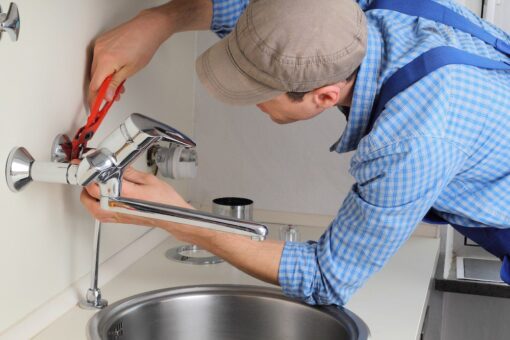
Modern taps are often more pressure-sensitive and efficient
Tap Performance and Water-Saving Features
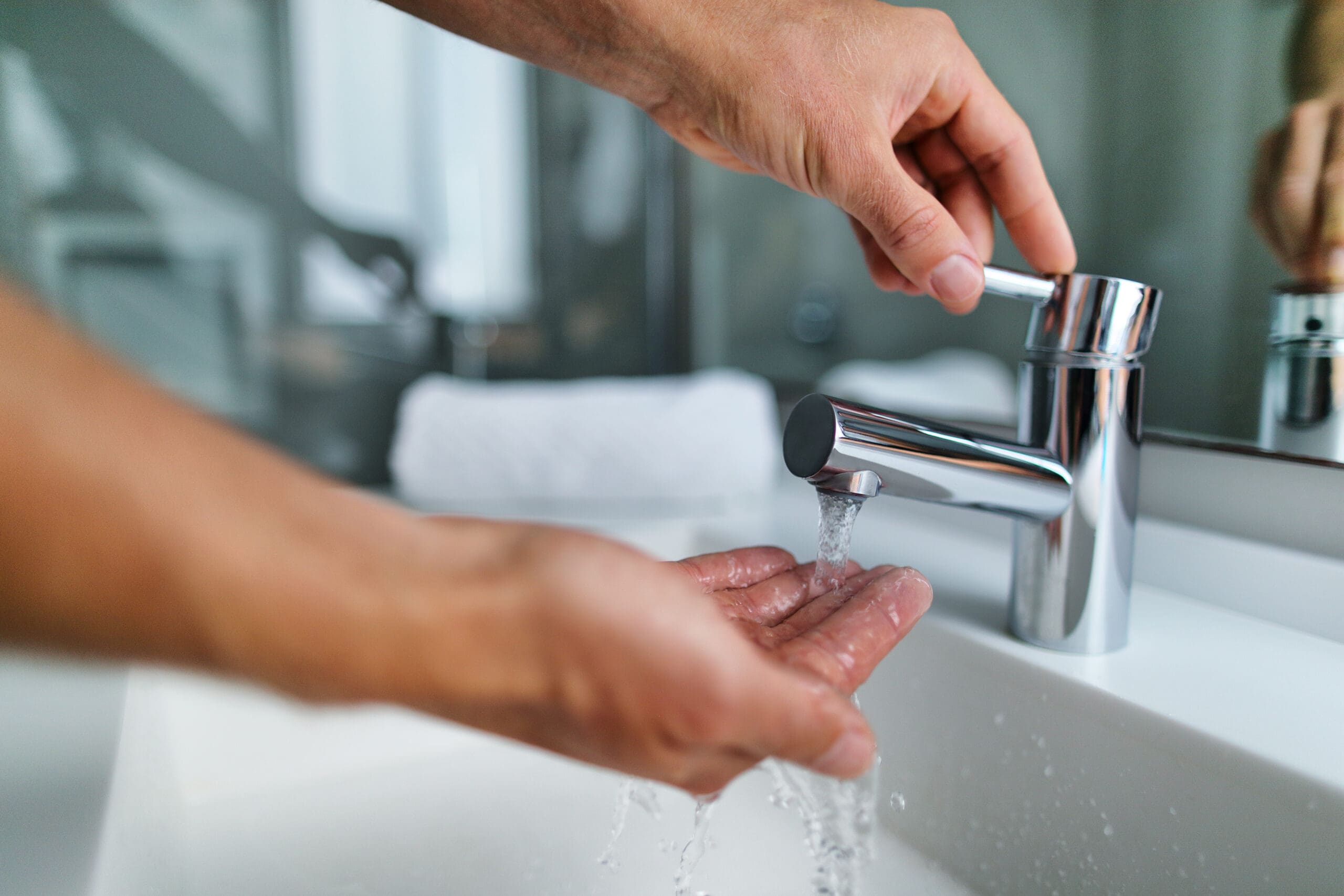
Many modern taps come with built-in flow restrictors or aerators designed to conserve water without sacrificing pressure. These features work best when your home’s water pressure is well-balanced.
Water pressure might seem like a technical detail, but it makes a big difference to how your taps perform. Whether you’re washing up, filling a bath or watering the garden, getting the pressure just right ensures everything runs smoothly.
Want taps that deliver top performance every time? Explore our range of quality taps at Tiletoria and find the perfect tap to suit your pressure needs.
Browse our range of Bathroom Taps
Browse our range of Kitchen Taps


